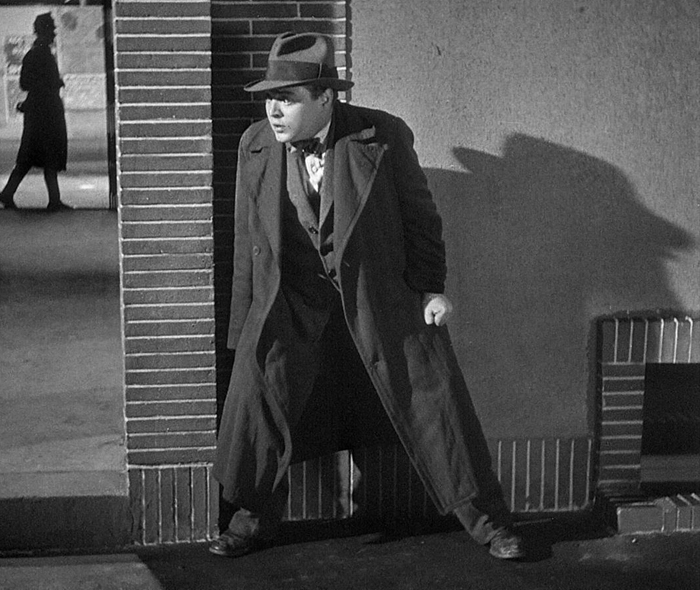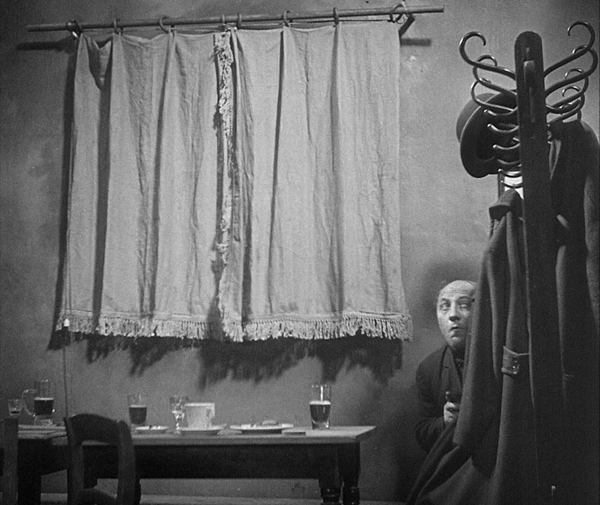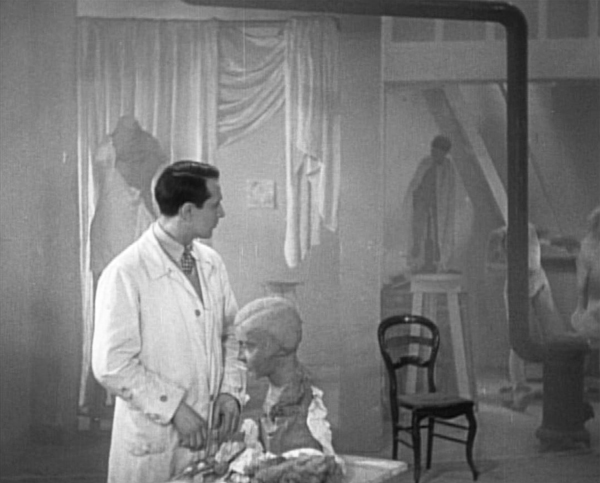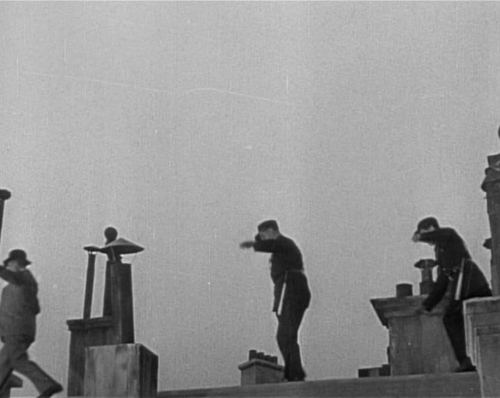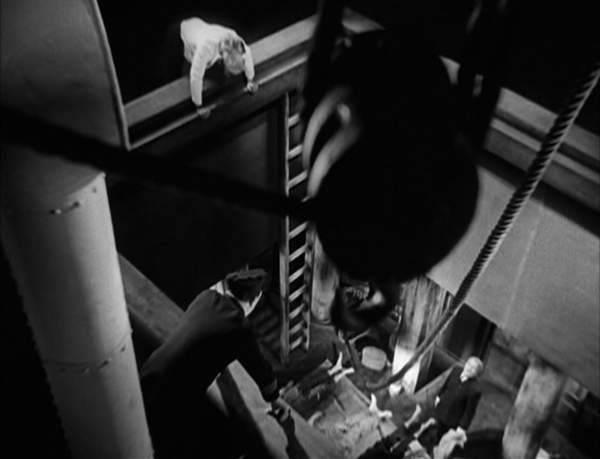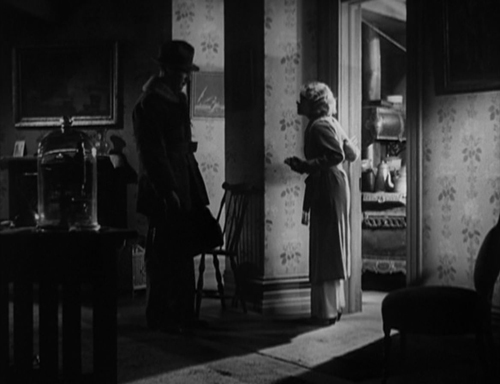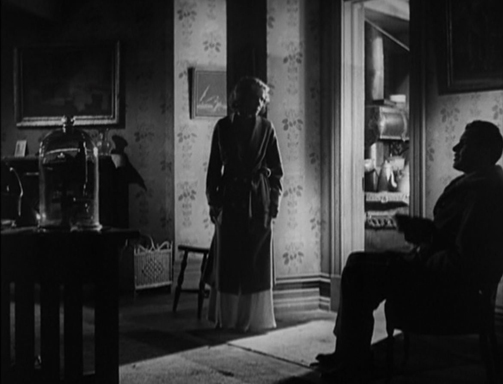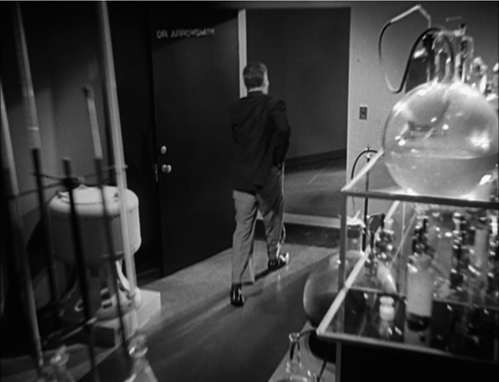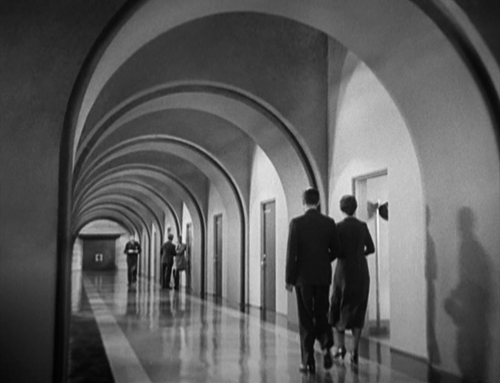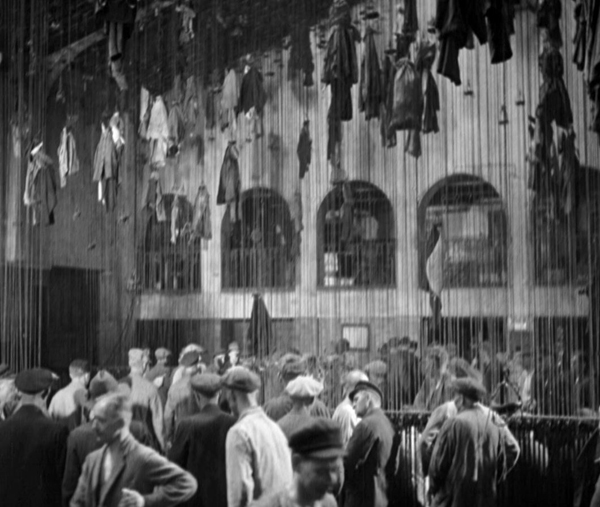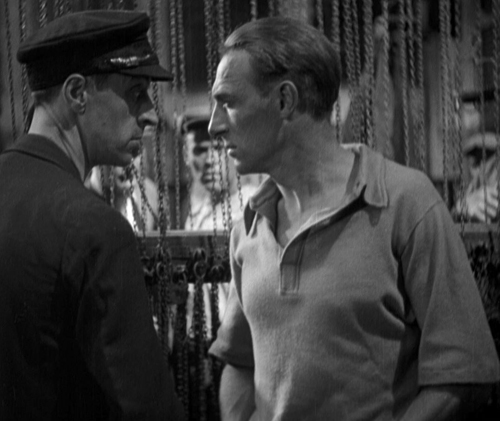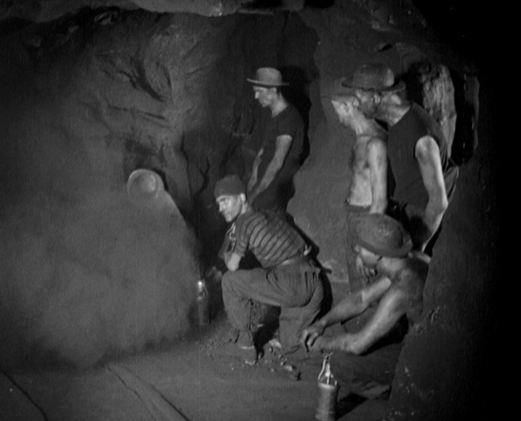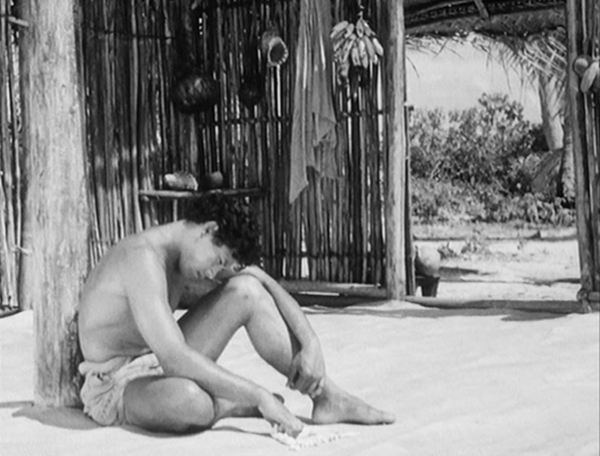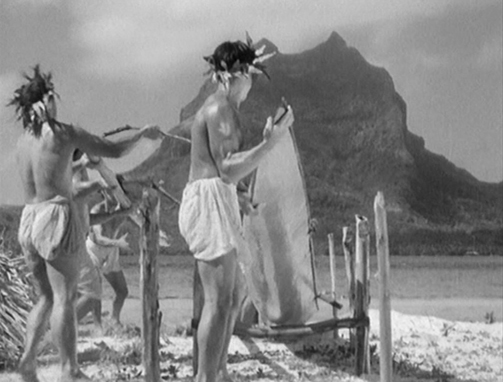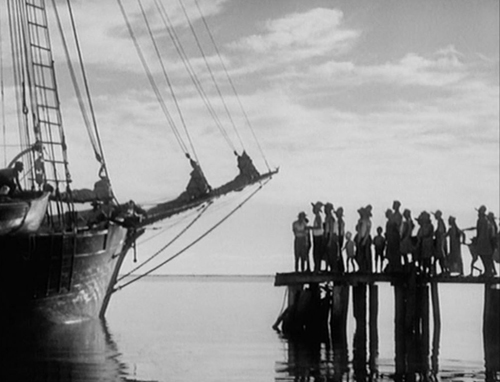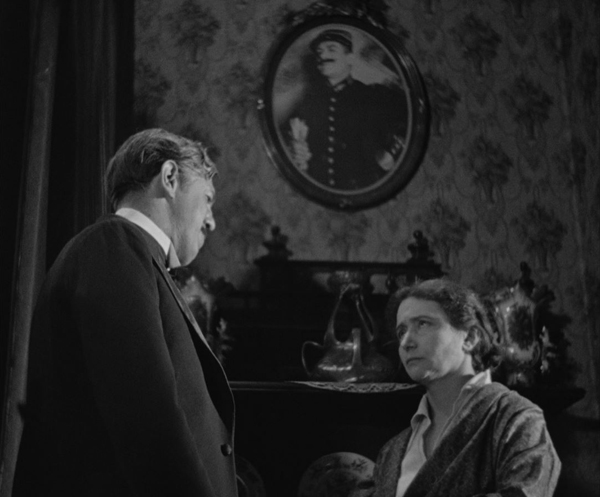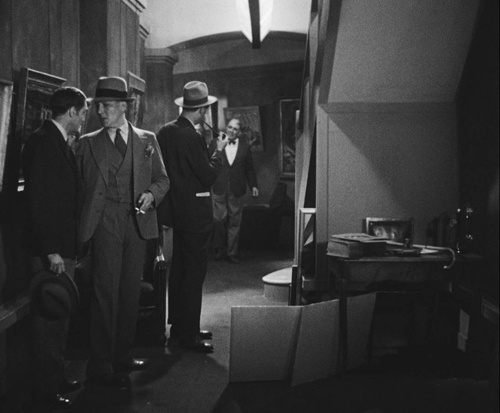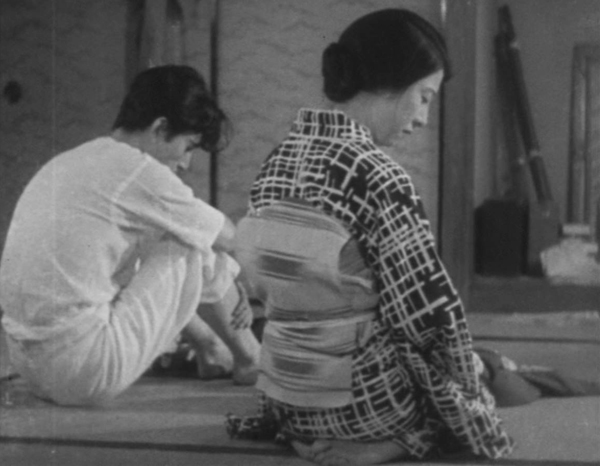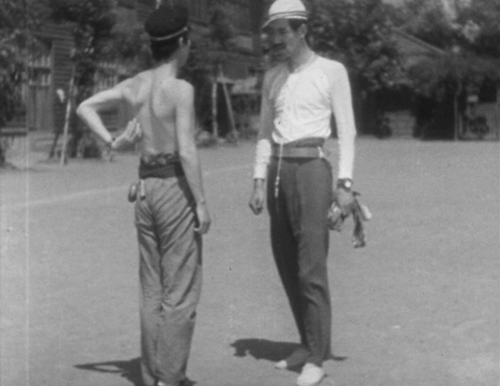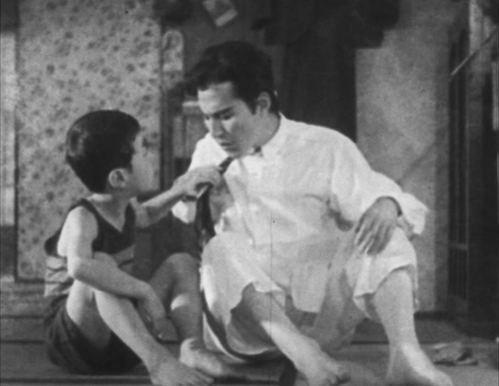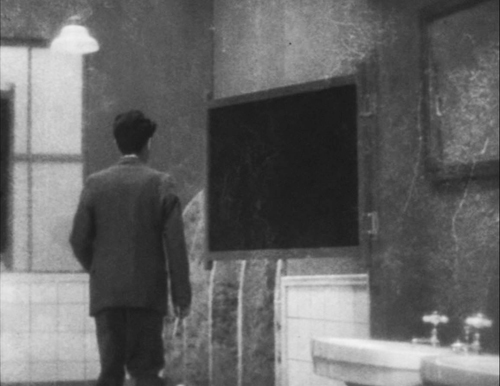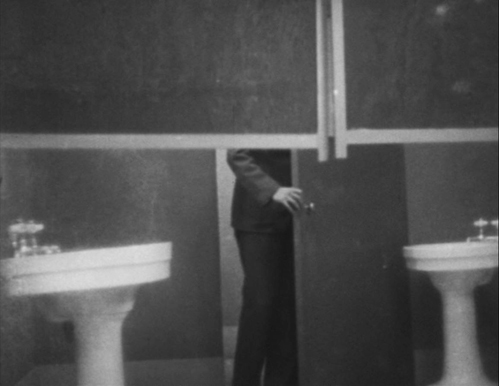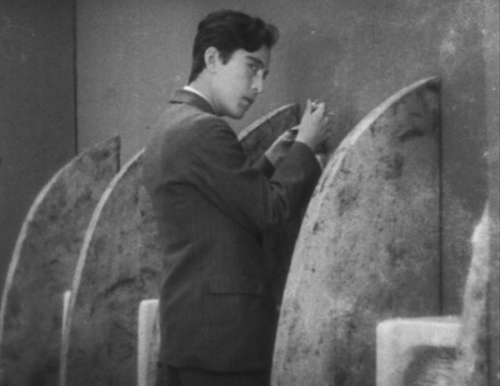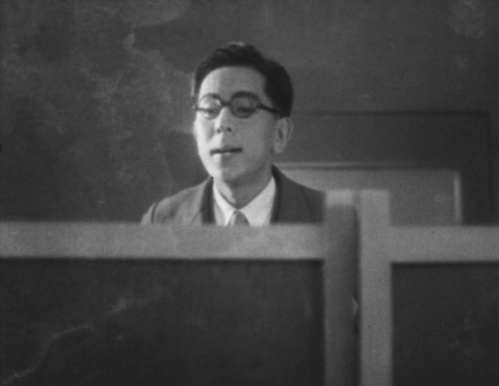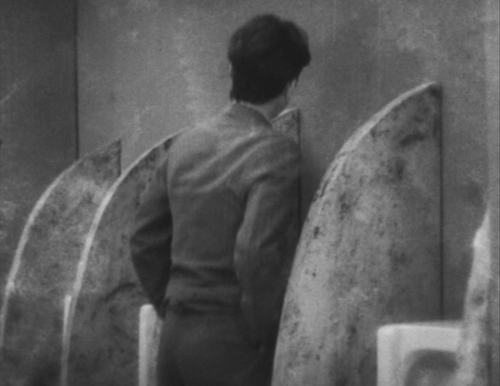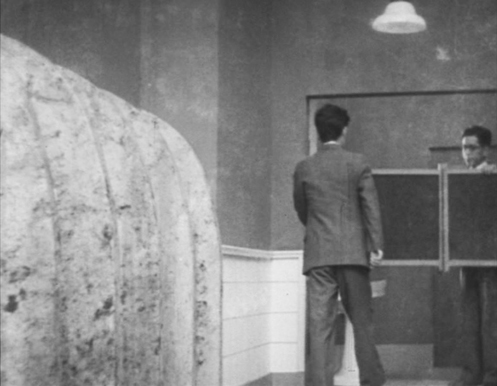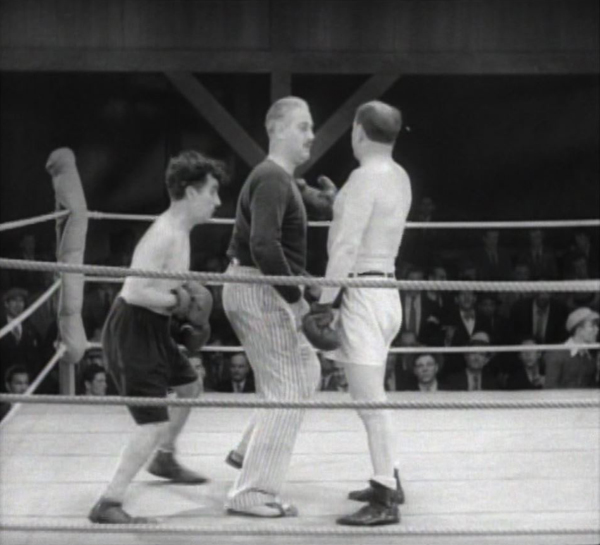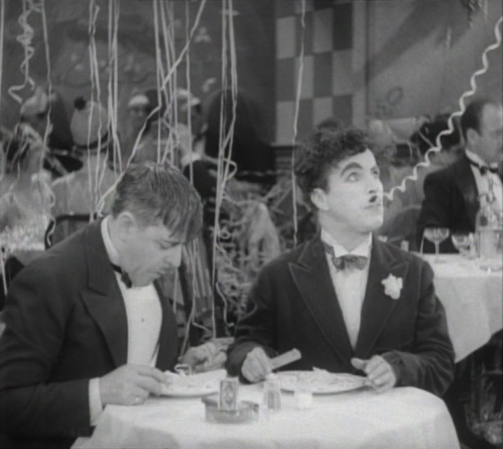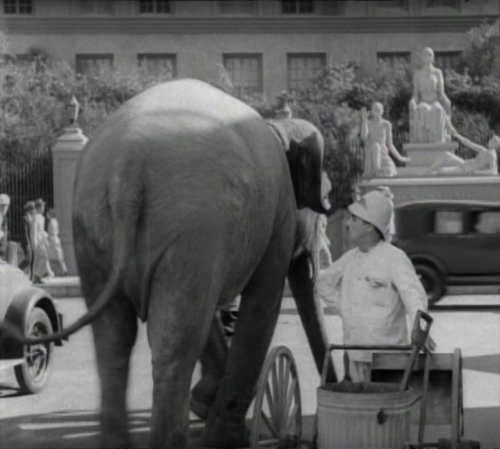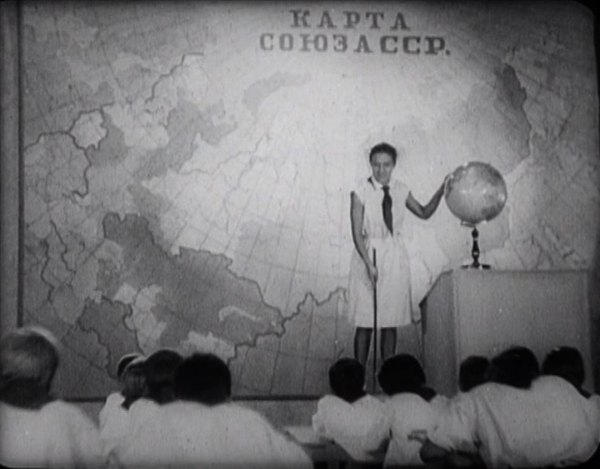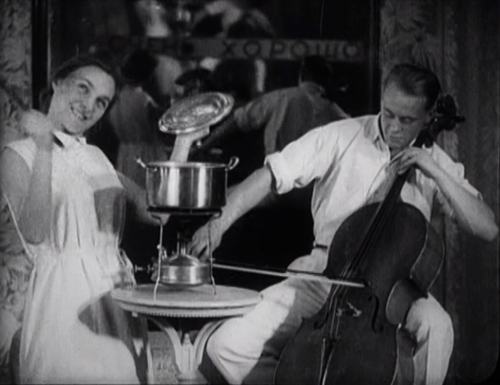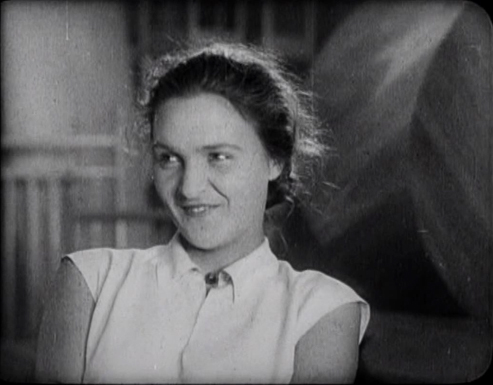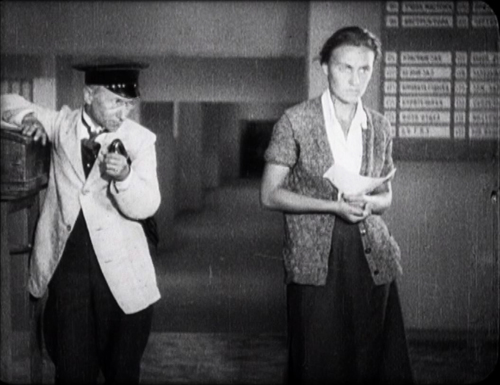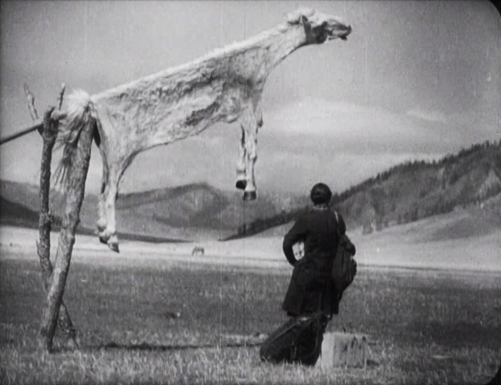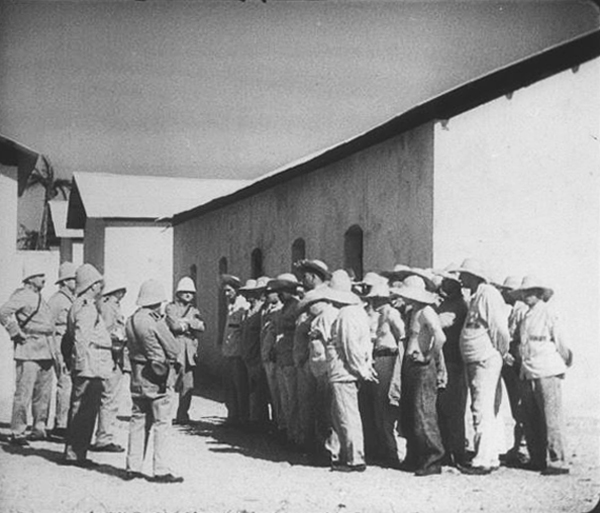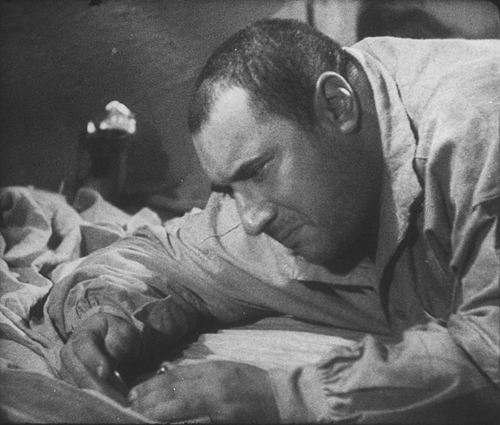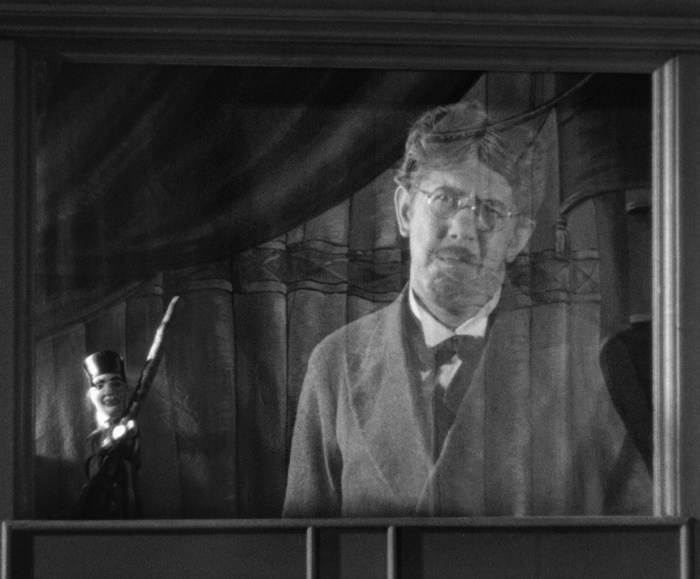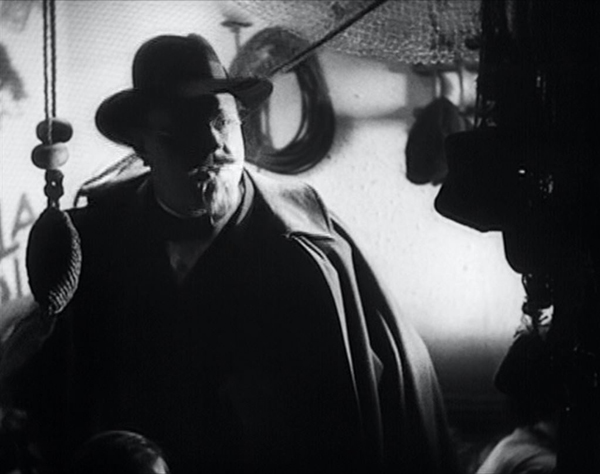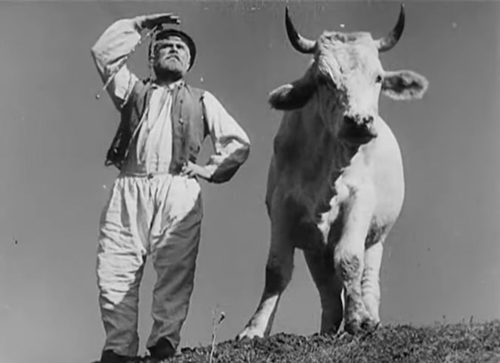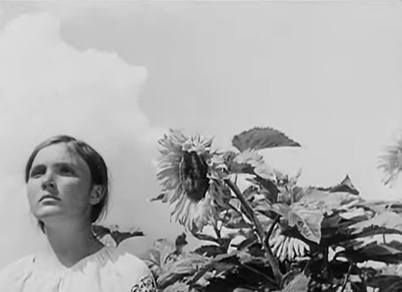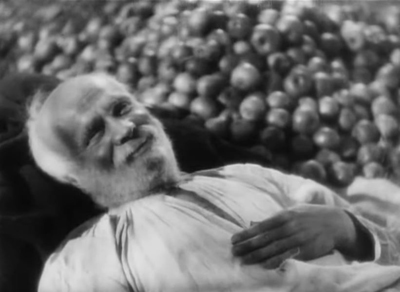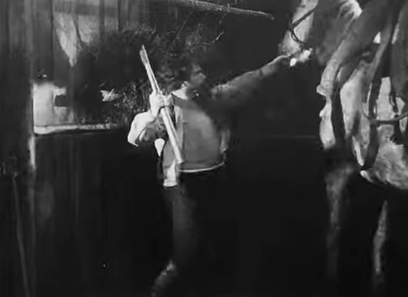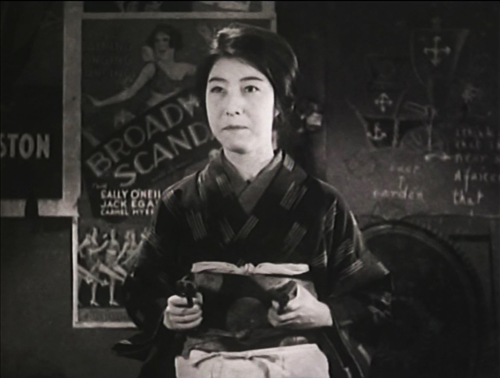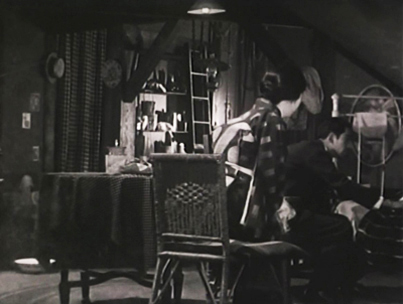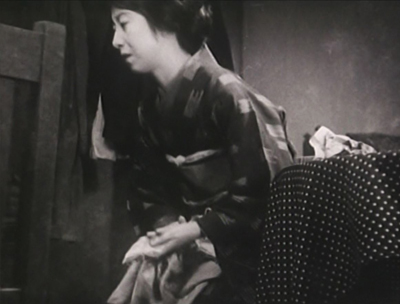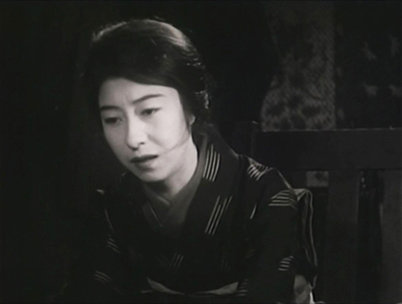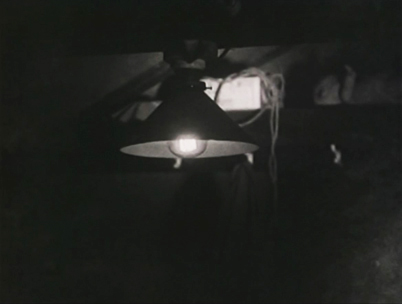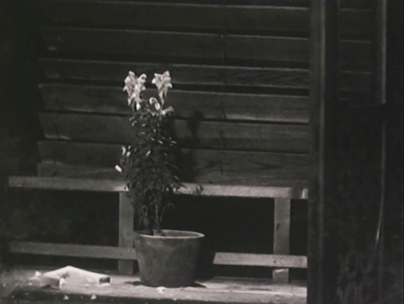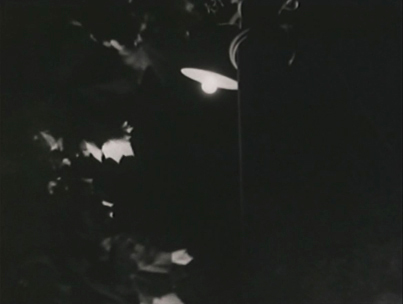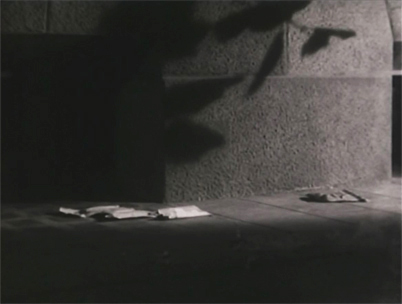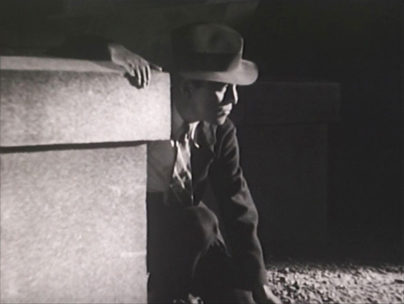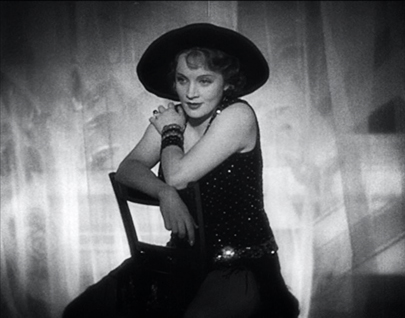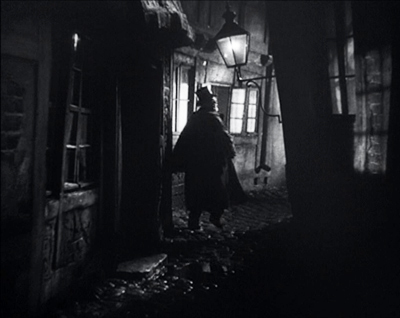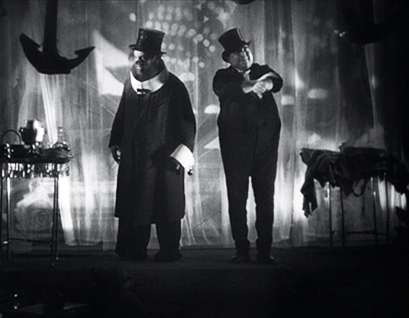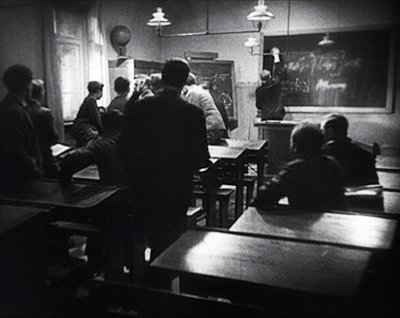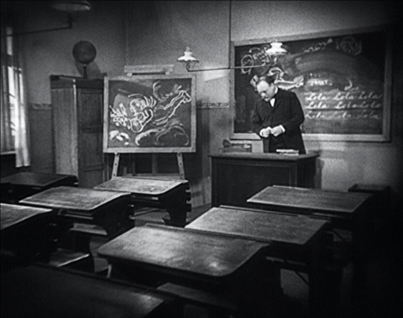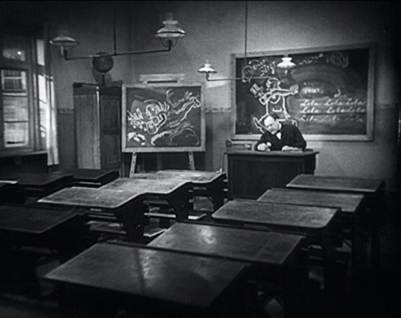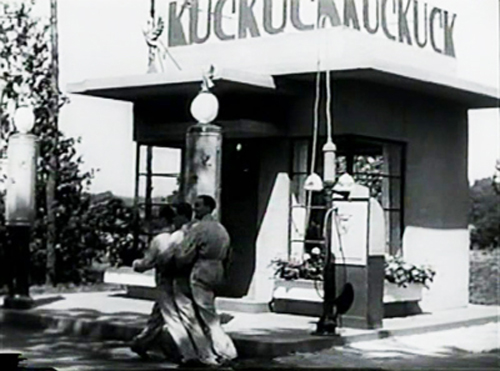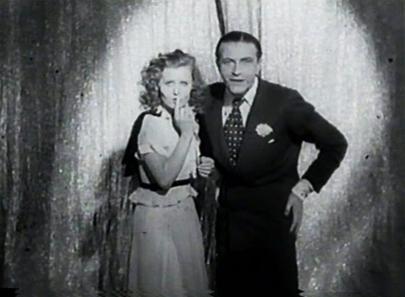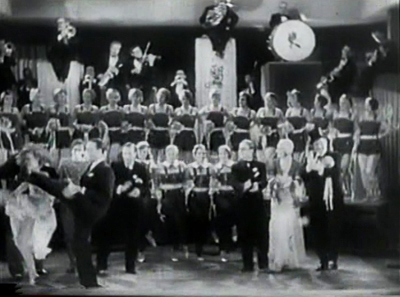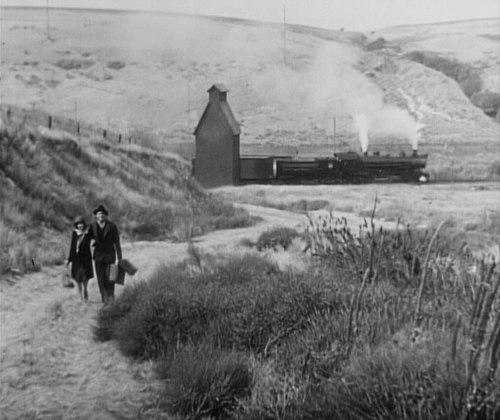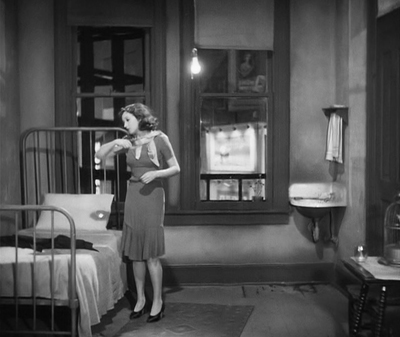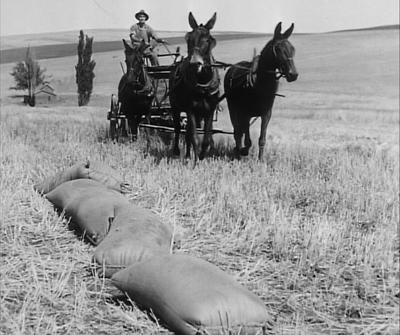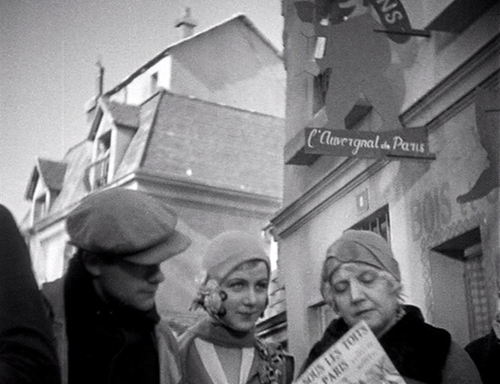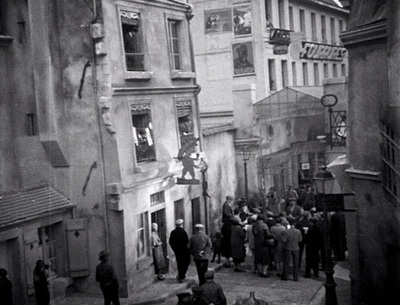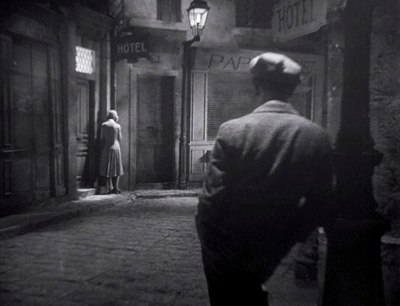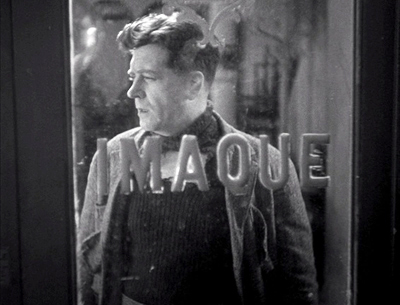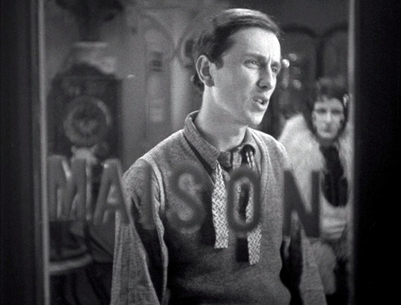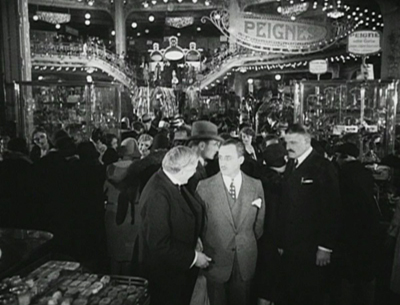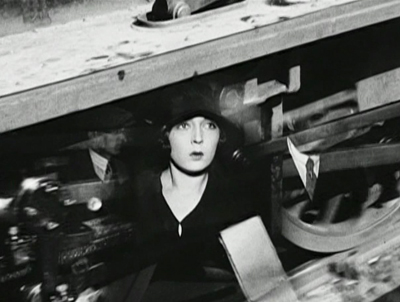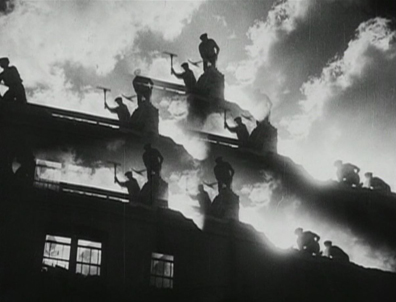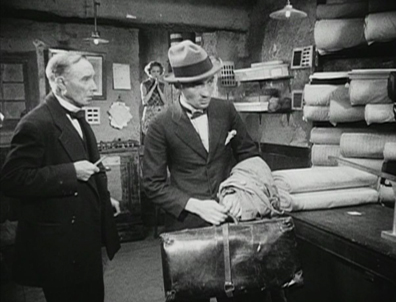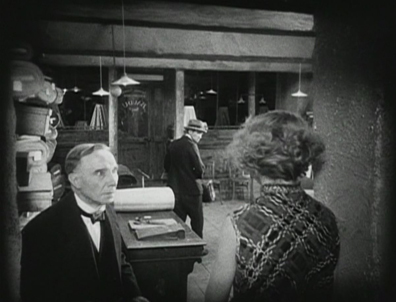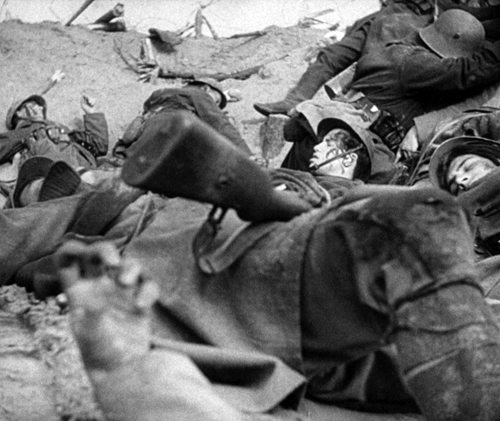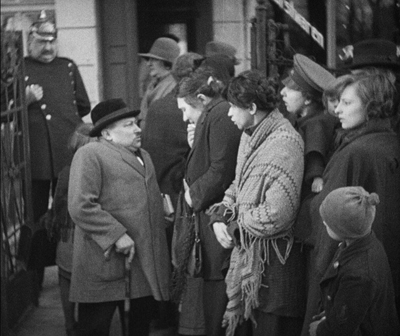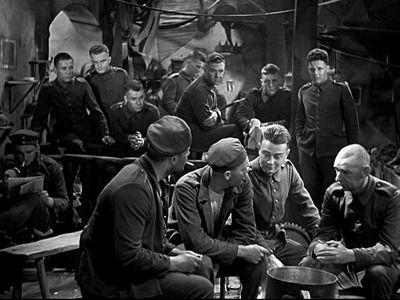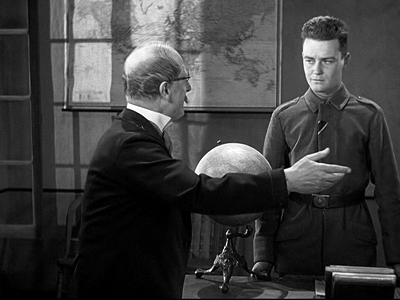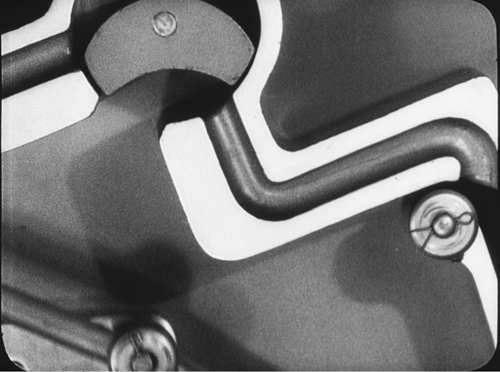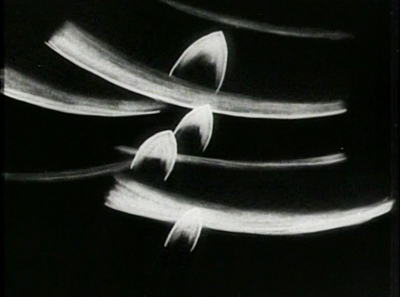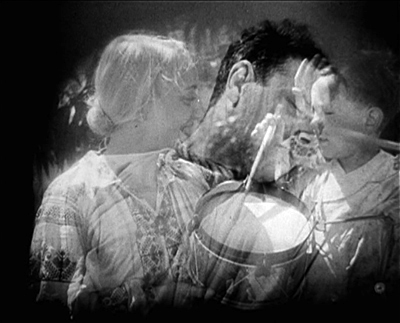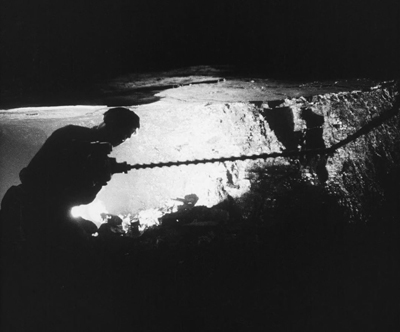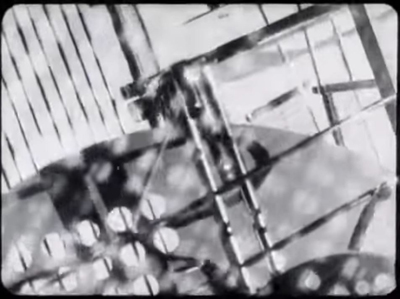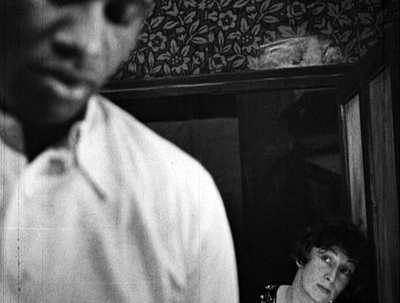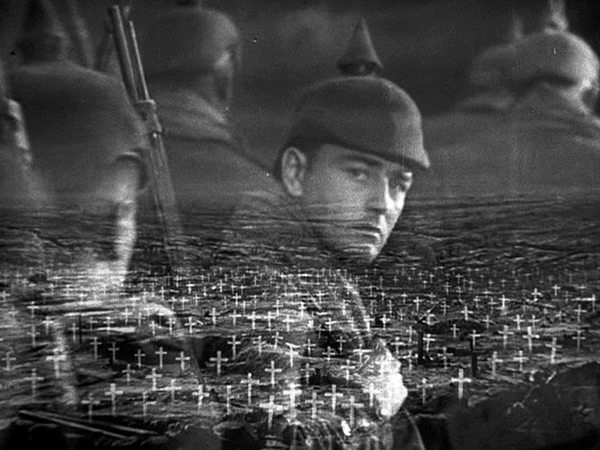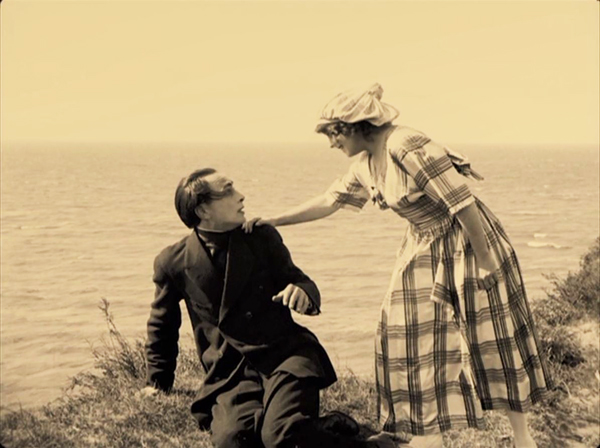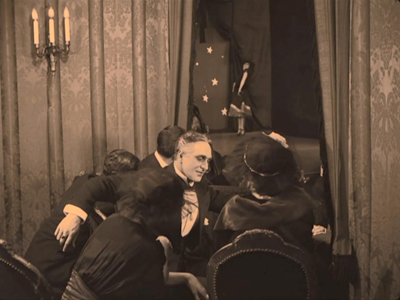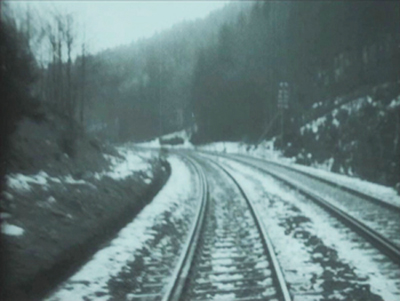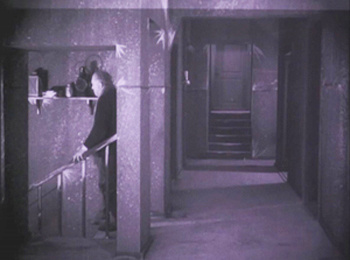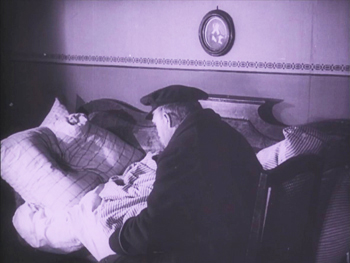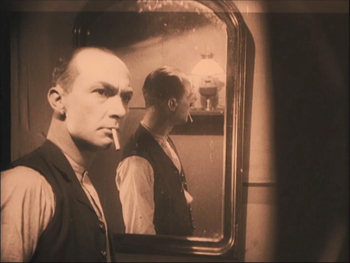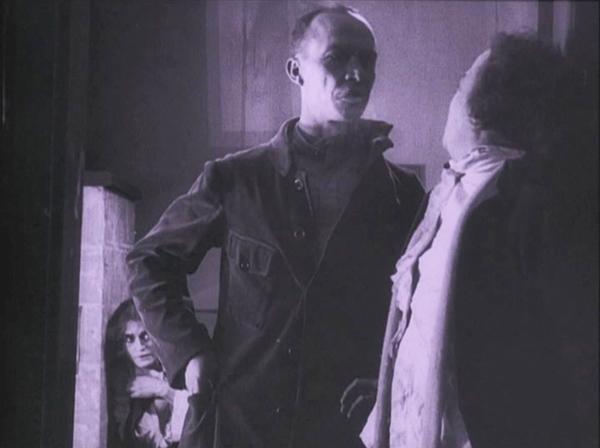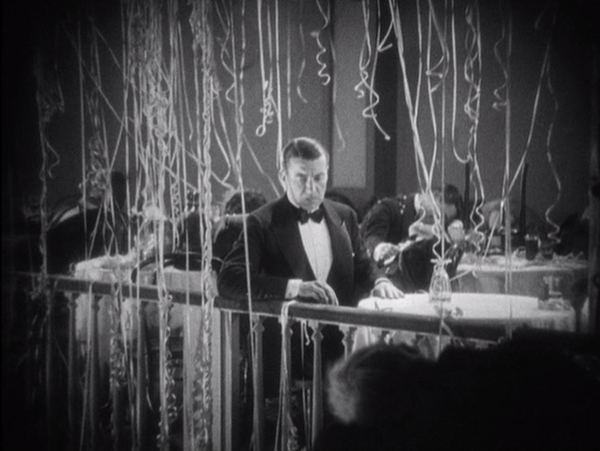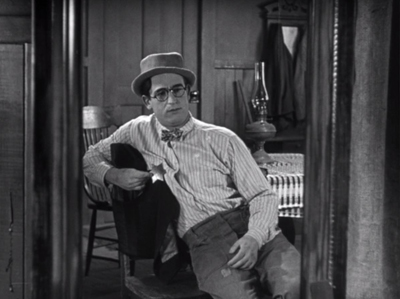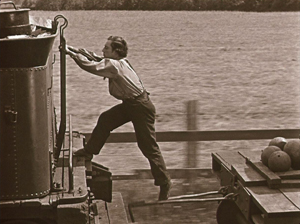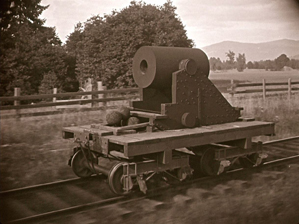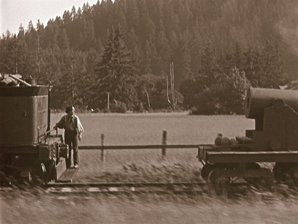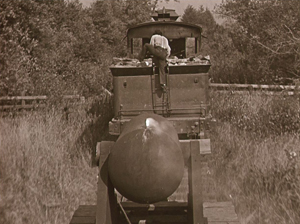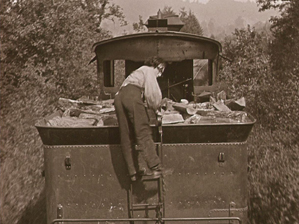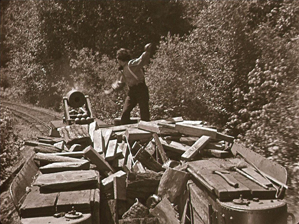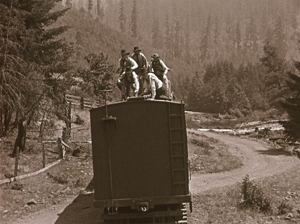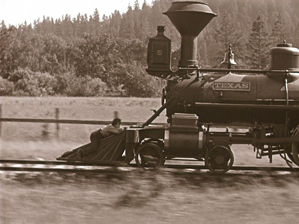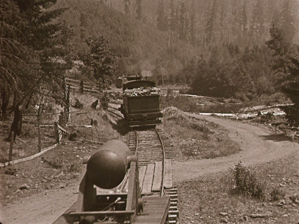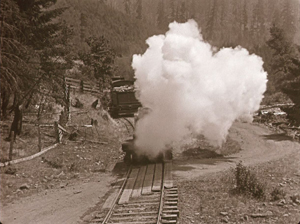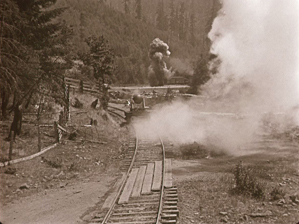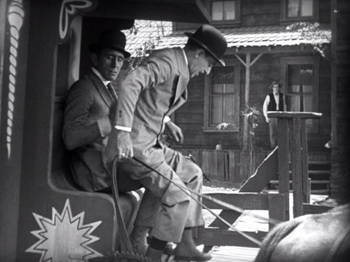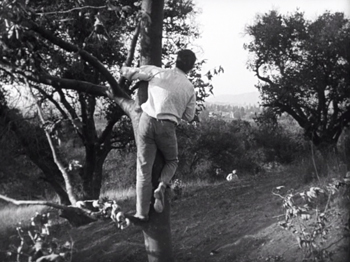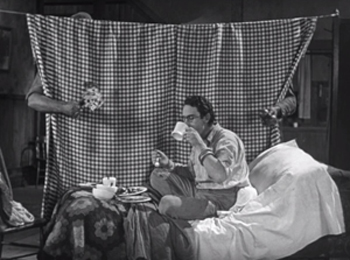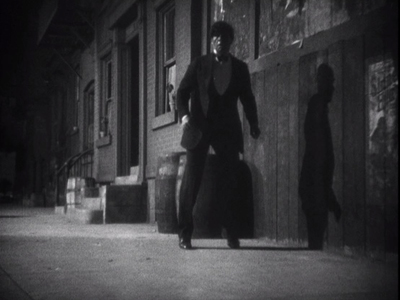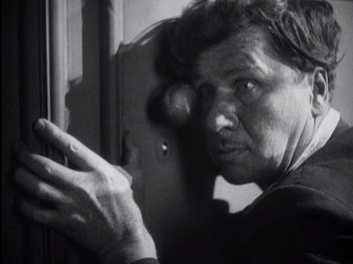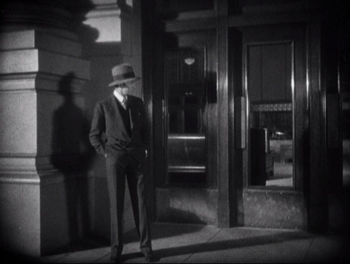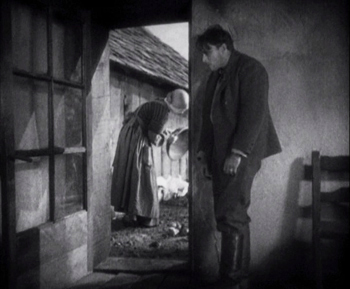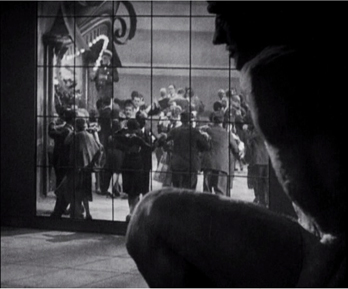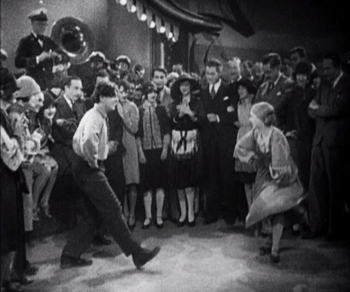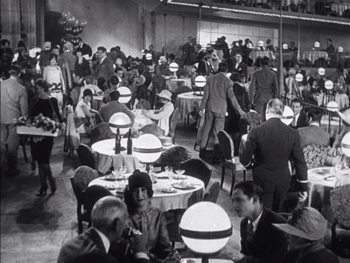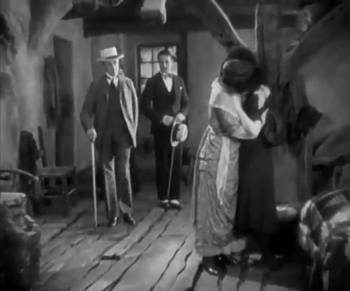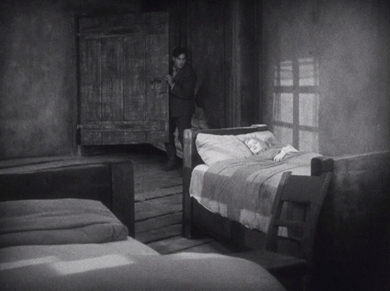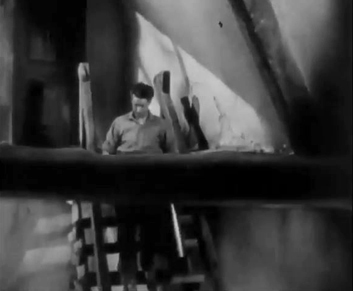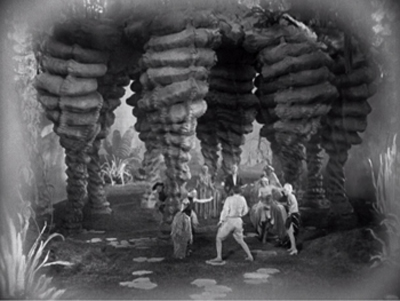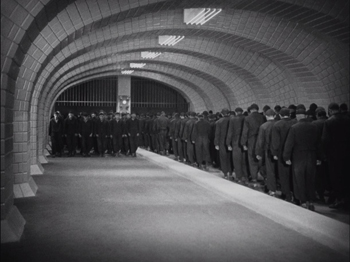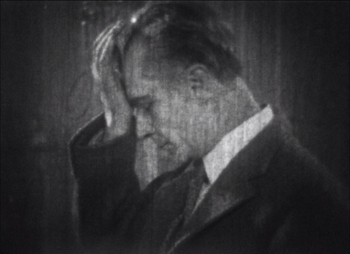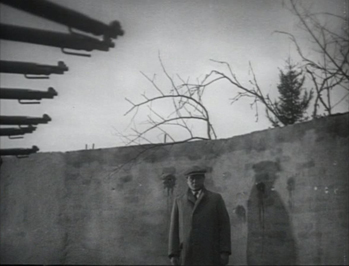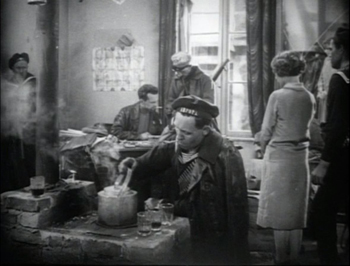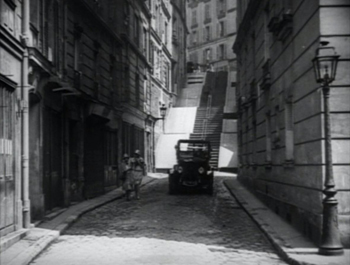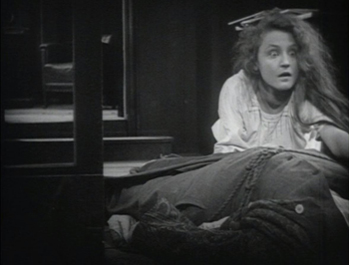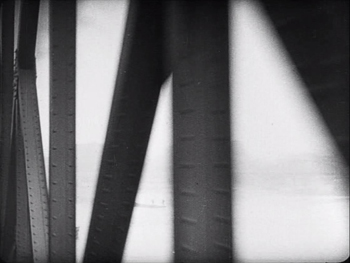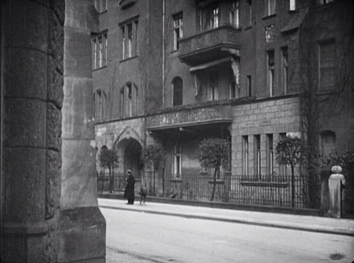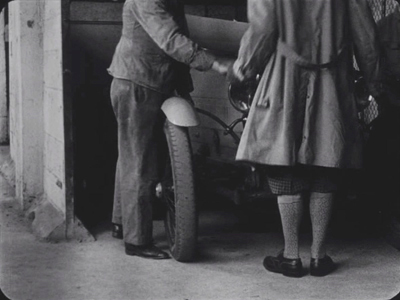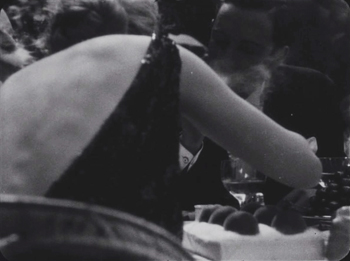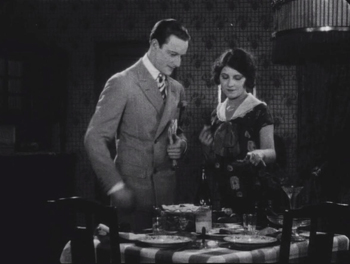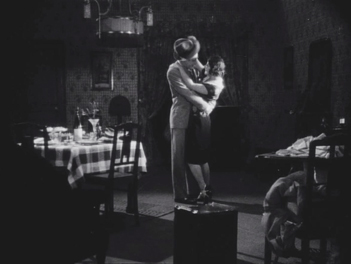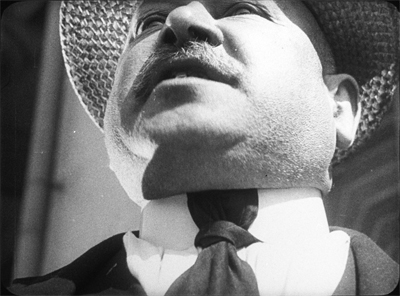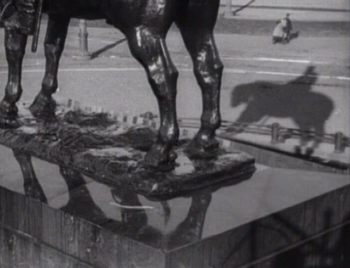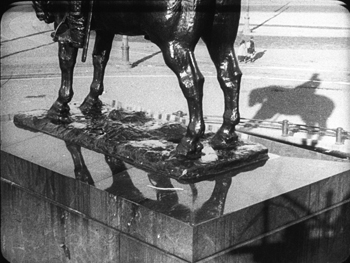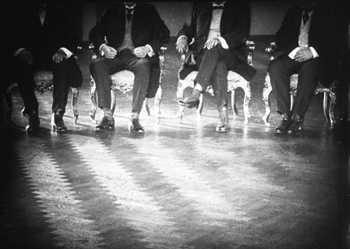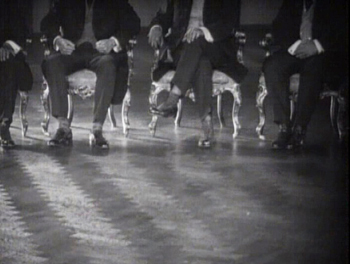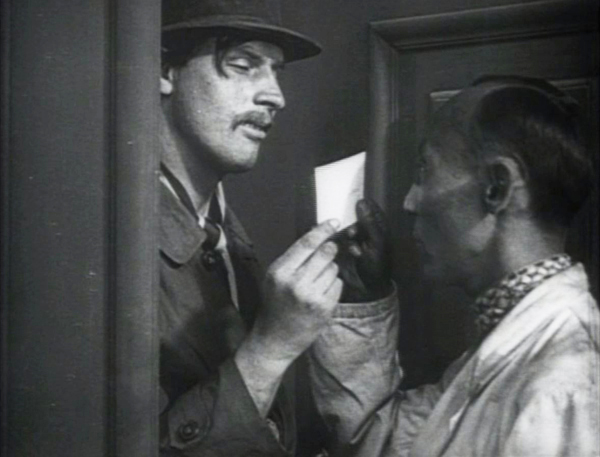Archive for the 'Directors: Murnau' Category
The ten best films of … 1931
M (1931)
Kristin here:
Our regular readers know that this annual series began as a simple salute to 1917, the year in which the basic norms of the classical Hollywood cinema definitively gelled. Starting in 2008, it became the “The 10 best films of …” list. It has stood in for the year-end ten-best lists which critics and reviewers feel obligated to concoct but which we avoid.
1931, I think, was a slight improvement on the rather lackluster 1930. A small handful of filmmakers mastered the “talkies” and made movies that look and sound as if they could have been made years later. These are the first four films below. It was a little harder to fill in the list beyond them. It’s is full of familiar classics, with a film or two that will probably unknown to many. I always try to include at least one worthy out-of-the-way title.
Previous entries can be found here: 1917, 1918, 1919, 1920, 1921, 1922, 1923, 1924, 1925, 1926, 1927, 1928, 1929, and 1930
M
I remember seeing M as a grad student, or maybe even an undergraduate, and being horribly disappointed. This was a masterpiece? Actually it was only a semblance of one. In the 1970s a poor, incomplete 16mm print with as sparse a set of subtitles as I think I’ve ever seen was in circulation. The wit and brilliance of Fritz Lang’s sound links and voiceovers were largely lost, as were the sharp images now evident in the restored version. Even restored, as the introductory titles tell us, it is missing 212 meters. Fortunately that’s only .4% of the total, and the narrative progression is so smooth and absorbing that it’s hard to imagine that anything could be missing.
The story concerns a child-murderer terrorizing a city and the parallel searches for him by the police and by the organized underworld, the activities of which are being hindered by constant police searches and raids. At one point Lang famously intercuts a meeting of city officials with one of a group of gangsters. Parallels are created by matched gestures between space but also by one line being started by a character at one meeting and picked up by one at the other. Lang races through exposition by having the voiceover of a phone conversation between officials continuing over shots of the investigation in various spaces.
He uses sonic motifs as well. The killer compulsively whistled a Grieg tune as he lures his victims, but whistles come back time and again. Police whistles signal the raid on a basement tavern, and the beggars who tail their suspect signal each other with whistles–heard by the killer, who flees into an empty office building and ends up trapped there (top).
There’s a lot of offscreen sound in this film. The raid on the tavern cuts around to various parts of the space, as when we briefly follow a crook who tries to sneak out (above) while the protests of the crowd and the whistles and shouts of the police are heard off. One might think that all this is to avoid having to lip-sync the sound with the characters speaking–but when he does show the speaker, the sync is perfect. It’s another instance, I think, of Lang using sound to cram a lot of action or information into a short stretch of time. The thwarted crook is just a bit of comic relief, something Lang injects at intervals into this grim narrative.
Back in 2012, when I participated in Sight & Sound‘s poll of critics and academics for the ten best films of all time, I put M on the list. Counting 2021, it is the third film from that list that I have included in this one: The General in 2016, The Passion of Joan of Arc in 2018, and now M. The next one won’t show up for eight years (hint: Renoir made it in 1939), assuming I’m still doing this list at that point.
If you’ve never seen M, make sure you don’t watch an older print! The restored version is on Blu-ray from The Criterion Collection in the US and Eureka! in the UK.
Le Million
René Clair made two film classics in 1931, À nous la liberté and Le Million. I find the latter a better film in that it’s more complex and lively. À nous la liberté, which focuses on only two characters who spend a stretch of the film apart, has a rather thin narrative. Le Million, on the other hand, involves a large cast of amusing characters and constantly bubbles with dances, chases, and farcical situations. Indeed, early on it cites the chase scenes of early cinema when police pursue the kindly thief, Père Tulip, over the rooftops.
The sets were created by the great French film designer, Lazare Meerson (who also did the more austere sets of À nous la liberté). The interiors often have soft, hazy backgrounds (top of this section) apparently done partly by painting and partly with real objects behind scrims. These give a stylized quality appropriate to a classic farce situation: the debt-ridden artist protagonist Michel frantically searches for a jacket holding a winning lottery ticket as the jacket goes from hand to hand. At one point crossing hallways permit two chases–the police after Tulip, the creditors after Michel–to pass through each other.
David and I taught Le Million in an introductory film class back in the 1970s. I hadn’t seen it since, but it lived up to my fond memories of it. As cheerful a film as one could find for what promises to be another year short on cheerfulness.
Le Million is available on DVD from The Criterion Collection. The description says that the lyrics are all translated here for the first time.
Arrowsmith
Early as it is, Arrowsmith is surely one of Fords’s great films of the 1930s. It’s an adaptation of Sinclair Lewis’ 1925 novel of the same name. (Lewis won a Pulitzer for it but refused to accept the award.) The plot centers around Martin Arrowsmith (Ronald Colman), who starts as a medical student eager to establish a reputation and help discover cures for various plagues. He marries a charmingly impertinent nurse Leora (Helen Hayes), who supports him in his efforts.
The style of the film is distinctly flashy in its lighting, depth shots, and set design. It looks like what we tend to think of as Wellesian–though many of these techniques could instead by dubbed Fordian.
There are dramatic chiaroscuro effects as when Arrowsmith arrives home one evening, discouraged, and Leora sympathizes with him. The figures are side-lit with illumination coming from the kitchen, and Arrowsmith becomes a silhouette once he sits down.
The depth shots are equally impressive. A spectacular high angle (top of this section) shows three levels of a ship’s interior, with Sondelius, a medical expert, shouting up to the captain that he has discovered bubonic plague onboard. A less flashy but highly intense shot shows Leora’s death from bubonic plague. The long take is filmed with what David terms “aperture framing,” with Leora placed far off-center and relatively far from the camera, framed in the arms of the foreground rocking chair. It’s the same chair in which she sat when she smoked a cigarette contaminated with one of her husband’s plague samples. It’s a brilliant way to emphasize that she dies alone, with the bright open door at the center of converging lines of the set stressing that her husband does not suddenly appear, as we might expect, to comfort her.
Other more casual uses of depth with prominent foregrounds include a shot of Arrowsmith exiting his laboratory with beakers, bottles, and other equipment dwarfing him (below right).
Note also the prominent ceiling on the sets in the image on the left above. The notion that Citizen Kane was the first Hollywood film to use ceilings on sets has long been discredited, and here’s a good example of why. In general, Richard Day’s art direction combines with the cinematography to create powerful images, as in the hallway of the McGurk Institute, where Arrowsmith gains a research post.
We know that Welles was influenced by Ford’s work, but he primarily stresses Stagecoach as a film he watched repeatedly before making Citizen Kane. Arrowsmith, however, actually looks more like Kane than Stagecoach does. Did Welles and/or Gregg Toland see it? Very likely at least one of them did. There seems to be no record of Welles having said he saw it, but in 1938 he wrote and performed the title role in a radio version of Arrowsmith that had Hayes repeating her role as Leora.
Moreover, Arrowsmith was produced by Samuel Goldwyn. In the late 1920s and early 1930s, Toland was making films there, including Eddie Cantor comedies (Whoopee!, 1930) and two crime dramas starring Colman (Bulldog Drummond, 1929, and Raffles, 1930). It seems implausible that he would not have seen Arrowsmith.
All this is not to say that Arrowsmith was the first film to play with depth and chiaroscuro. As David pointed out in a 2010 blog entry, such ideas were developing in Hollywood during the 1920s, and William Cameron Menzies in particular experimented with them. There David wrote, “The flashy depth compositions of the 1920s and 1930s were typically one-off effects, used to heighten a particular moment.” True enough, but I think Arrowsmith uses them more consistently.
So far Arrowsmith has not been released on Blu-ray, but the MGM DVD has surprisingly good visual quality for a film from this period. (Amazingly enough, you can still buy new VHS copies on Amazon.)
Kameradschaft
Like Clair, G. W. Pabst directed two classic films in 1931, Kameradschaft (“Comradeship”) and The Threepenny Opera. The former is a network narrative, cutting among several characters or small groups of characters as they react to a mine disaster.
The story is set in two villages on either side of a French-German border. Each is a mining town, exploiting what is actually the same rambling mine that has walls and bars in multiple tunnels marking the end of the German portion and the beginning of the French one. When escaping gas triggers a fire and ceiling collapses on the French side, two truckloads of German miners volunteer to go and help the rescue teams.
As the title suggests, the film stresses the theme of solidarity among the miners, though Pabst doesn’t paint an entirely rosy picture of this. The German miners coming off their shift argue about whether they should assist their French counterparts, and many declare that it’s none of their business. Pabst stages the debate in a visually interesting locale, the changing room where the mining outfits of the men are stored on ropes or wires up by the ceiling (above and below, left). The leader of the group which goes to help with the rescue is played by Ernst Busch, a well-known Communist actor-singer who was also in the original stage version of The Threepenny Opera and Pabst’s adaptation, as well as Slatan Dudow’s Kuhle Wampe (1932), from Brecht’s script. His presence as one of the main characters in the network plot–and the one who spurs others to volunteer as rescuers–helps give Kameradschaft a distinctly leftist tone.
As with many other films set in coal mines, the mine itself was an elaborate and convincing studio set (above right). One collapsing area of a mine looks much like another, but Pabst found ways to vary the action from scene to scene. Variety is added through a contrast in the main characters being followed. An old ex-miner sneaks into the mine to search for his grandson. Three German miners who didn’t go in the trucks to the French side decide to make a rescue effort on their own, breaking through the barred underground border to do so. They end up alongside the old miner and his grandson, trapped in the underground stable, where the presence of a placid but doomed horse adds a poignancy to the scene. At intervals the drama going on among the mothers, wives, and sweethearts of the French miners clustered at the gates is shown.
The weaving together of the various threads of action creates a strong sense of suspense. No one character can be singled out as the protagonist, the one who might be expected to survive. Some miners and rescuers escape, but there are many who die or suffer serious injuries.
Despite the emphasis on the comradeship of miner of both nationalities, the Germans definitely come off better. Their rescue team is well-equipped and efficient, while the French workers deal with problems like an elevator being out of commission. It probably would never have occurred to Pabst and the others involved to make a film where French miners help rescue German ones–and it probably would not have been greenlit by the production company if they had. On the level of the individual miners’ actions, however, the notion of working-class solidarity comes across.
Kameradschaft is available on DVD and Blu-ray from The Criterion Collection.
Tabu: A Story of the South Seas
Tabu was Murnau’s final film. (The opening scene of the hero fishing with his friends was shot by intended co-director Robert Flaherty, who soon quit due to disagreements with Murnau.) It deals with Matahi and Reri, who live a joyful life on unspoiled Bora Bora until an elderly man from a nearby island arrives and announces that the “Virgin sacred to our gods” has died, and Reri is to be her successor. Matahi rescues her, and the two flee to another island which has been colonized by the French. They have established a pearl fishery and hire local men to dive for pearls. Matahi proves expert at this, but not understanding what money is, he soon gets himself deep into debt by signing IOUs.
Rather than using Hollywood stars, Murnau cast local unprofessionals. As the credits announce, “only native-born South Sea islanders appear in this picture with a few half-castes and Chinese.”
The two leads are appealing characters, and the images take advantage of the unspoiled scenery of Bora Bora (below left). Floyd Crosby earned an Oscar for Tabu‘s cinematography.
Tabu is a far cry from Murnau’s German films, but Nosfertu‘s famous shot of the vampire’s ship sailing eerily into the frame from offscreen is echoed as a motif here (below right).
The original version released by Paramount was released on DVD by Milestone. A restoration of the original cut of the film is available on DVD and Blu-ray from Kino Classics in the US and Eureka! in the UK, both with numerous supplements. A helpful comparison of these versions is available here.
La Chienne
I think it is safe to say that most critics and historians consider La Chienne the film where Renoir’s distinctive traits as a director began to emerge. I have seen most of the early Renoirs, but long enough ago that I can’t make a comparison. It does seem to me, though, that it is quite different from his previous work.
Maurice Legrand, the protagonist played by Michel Simon, is the most Renoirian character. He is a mild-mannered accountant married to a termagant who nags him constantly and forces him to remove from their apartment the paintings and the equipment he uses for his hobby. This sets off the events which follow, as Legrand hangs the paintings in the apartment of a prostitute, Lulu, with whom he has fallen in love. Her pimp Dédé concocts a scheme to sell the paintings, which he passes off to a dealer as the product of an American painter named Clara Wood. Even when Lulu explains what happened to the paintings, Legrand is so besotted that he raises no objections.
Although “la chienne” of the title is clearly Lulu, it might refer to Adèle Legrand as well. “Chienne” is more-or-less the equivalent of the English “bitch,” meaning both a female dog and an obnoxious woman, which Adèle certainly is. In their first scene together, she berates Legrand at length, comparing him unfavorably with her first husband, whose portrait in military uniform looms over them (above). Legrand does not rebel but answers in quiet sarcastic comments and ultimately obeys her order about the paintings.
In French, “la chienne” has the additional meaning of a prostitute, clearly referring to Lulu. Legrand is trapped between a constantly angry wife and a prostitute skilled in behaving in a docile fashion, pretending, as she finally admits, to love him solely in order to maintain the flow of money from the paintings. This admission finally drives him to fight back, killing Lulu. He ends up as a jovial tramp, foreshadowing Simon’s later role as Boudu in what is arguably Renoir’s first true masterpiece.
Stylistically the film does not strongly resemble Renoir’s major films of the mid- to late 1930s. Still, the scene in which Dédé and his friend approach an art dealer in their first attempt to sell one of Legrand’s paintings consists of a longish take of nearly two minutes, with staging in depth (below) when the dealer returns from a search and a track-in to a closer framing for the negotiations. Also, the film starts as a puppet show, with puppets introducing the main characters, whose images are superimposed over the little stage (bottom). This looks far forward to his final film, The Little Theatre of Jean Renoir (1970).
La Chienne is available on Blu-ray and DVD from The Criterion Collection.
Tokyo Chorus
Last year Yasujiro Ozu made his first appearance on this list for That Night’s Wife. This year it’s Tokyo Chorus (or Chorus of Tokyo). With sound barely established in Japan, Ozu made this and several subsequent films silent.
As the Criterion Collection liner notes explain, Tokyo Chorus combines the three genres Ozu had worked in before: the student comedy, the salaryman film, and the domestic drama. The student comedy subject gets disposed of early on, with the first scene showing the a comically strict teacher scrutinizing his class, lined up military-style; the protagonist, Shinji, tries some mild defiance by being late and showing off (below left).
Soon he has graduated, though, and is working in an office where the employees are awaiting their year-end bonuses. Just as quickly, Shinji is fired for protesting when an elderly colleague is fired just before his retirement and pension payments.
The rest of the film seems like a practice piece for I Was Born, But … (1932) and other Ozu films involving bratty kids who make demands on their parents. In this case Shinji’s son insists that his father buy him a bicycle and pesters him until he finally gets it (above right). As in the later film, Shinji is humiliated by having to take a job helping his old teacher to publicize his curry cafe.
Ozu’s growing mastery of editing for comedy is shown off in the early scene when the office employees try to find out how big a bonus their colleagues have received. Shinji sneaks away to the restroom to open his envelope, pretending he has gone to use a urinal. A low-height shot shows another man coming in, with the swinging doors of the urinal area showing him only from the waist down. Shinji, just about to open his envelope, glances off and sees him. A reverse shot shows the colleague stopping and staring, clearly more interested in Shinji’s bonus than in using the urinals. Shinji gives up, pretends he is just there to relieve himself, and a final shot shows him departing still not knowing how big his bonus is.
By this point, Ozu has mastered balancing comedy and pathos, a mixture of tones that will reappear in many of his future masterpieces.
Tokyo Chorus is has been released on DVD, appropriately enough along with two of those future masterpieces, I Was Born, But … and Passing Fancy (1933), by The Criterion Collection.
City Lights
I must admit that I do not admire City Lights as much as The Gold Rush and The Circus, which featured in my ten-best lists of 1925 and 1928. I think it has some narrative problems.
For one thing, the blind flower seller as a love interest is pretty passive and doesn’t allow many opportunities for generating humor. In The Gold Rush, Chaplin had the inspiration to introduce a dream sequence about the dance-hall girls, including his beloved Georgia, coming to dinner with him. He then inserted his classic gag, the dance of the rolls. Much of the action in The Circus involves the heroine, as with the magic act into which the Tramp stumbles. The flower seller mainly generates pathos, right up to the ambiguous ending. (I have seen commentators take the ending as a clear indication of a budding romance between the pair, but I think we get no clear indication that her gratitude for the help the Tramp has provided will blossom into love.)
Chaplin needed to fill out the film with action beyond the few scenes involving the flower seller. Much of the action involves the Tramp’s on-again, off-again friendship with the eccentric millionaire, which is a weak premise to carry so much of the narrative. This character treats the Tramp as his closest buddy when drunk but then fails to recognize him when sober. This happens three separate times and gets a bit repetitious in a way not seen in other Chaplin films. The main contributions of the millionaire to the plot are to give the flower seller the impression that the Tramp who buys her flowers is a wealthy man and to give the Tramp the money for the flower seller’s eye-restoring treatment. The character of the millionaire does create some humorous bits, as when the pair eat spaghetti and the Tramp gets a curly streamer mixed in with his and keeps on eating it. I can’t help contrasting the millionaire with the Mack Swain character in The Gold Rush, whose interactions with the Tramp generate so many hilarious gags.
There are admittedly other funny scenes, especially early on, when the Tramp is discovered asleep on the lap of a statue being unveiled before a crowd or when he becomes a street cleaner to earn money for the flower seller and is immediately confronted with a group of horses and, as a topper, an elephant passes.
Later on in the film, though, the plot premise of earning money to help the flower seller have an operation to restore her sight generates one of the funniest scenes in all of Chaplin’s work. He agrees to participate in a fixed boxing match, with his opponent going easy on him and the two splitting the purse. The opponent is replaced by a tough guy who clearly has no intention of playing nice. The Tramp’s tactics to avoid being beaten up involve dancing around directly behind the referee at first (top of this section) and then, in a dazzling bit of choreography, the three figures move around the ring, changing places repeatedly so that the Tramp is sometimes behind the referee, sometimes behind his opponent, and so on. It is reminiscent of the scenes in the hall of mirrors as the Tramp is chased by a pickpocket and then by a policeman in The Circus, with the characters and their reflections dodging in and out of view.
Chaplin famously refused to allow spoken dialogue in his film, despite the fact that the transition to sound was well established in the USA by 1931. He restricted the track to music and sound effects, a tactic he carried over to Modern Times as late as 1936, though there the Tramp’s voice is heard for the first and last time singing a nonsense song. Chaplin retired his long-time character thereafter.
City Lights is available on DVD and Blu-ray from The Criterion Collection.
Odna (Alone)
When I was in graduate school, the only film by Grigori Kozintsev and Leonid Trauberg widely known outside the Soviet Union was their 1926 adaptation of The Cloak, which appeared in my best-ten list for that year. Then people discovered, to some extent, The New Babylon, which appeared in the entry for 1929. I suspect that few people have seen, or even heard of, their marvelous first sound film, Odna.
It was planned as a silent film, but delays permitted the use of sound technology to add a track to it. The main element of the track is Dimitri Shostakovich’s musical accompaniment. (He had also composed the musical accompaniment for The New Babylon.) The music comments on the action, often in a mocking way. Occasionally there are sound effects, and very occasionally, brief lines of dialogue, recorded and added after the filming.
The plot centers around a young teacher fresh out of school, Yelena Kuzmina (played by Yelena Kuzmina, who also played the protagonist of The New Babylon).
The first section of the film is played with an absurdly jolly exuberance. Yelena is engaged to a handsome young man, and a lively montage of shots shows her visions of the ideal life she plans to lead with him in Moscow, including window-shopping for expensive sets of dinner crockery, playing a musical duet at a cafe (below left), and teaching attentive children seated in neat rows in a well-equipped classroom (top of section). Shostakovich’s music is ridiculously cheerful, and a song about how beautiful life will be plays over a shot of Kuzmina’s fatuous grin (below right).
The tone switches abruptly as Kuzmina receives an assignment to a teaching post in a remote, mountainous primitive district of Siberia.
Devastated, she lodges a complaint, which seems likely to succeed. An elderly man in the office tells her that she’s right to try to change her assignment (below left). She erupts, “I’m going anyway!” This is one of the few post-dubbed lines.
Upon arrival in the Siberian district, she encounters a dead horse’s skin on display (below right); this returns as a motif to emphasize how primitive and in need of education the area is. At first the villagers react with indifference or antagonism, seeing no point in having their children go to school. Oddly enough, the local Soviet official is lazy and also indifferent, leaving her alone with no aid in convincing the villagers to accept her. (This negative depiction of the Soviet official later got the film banned, despite its considerable popularity upon its initial release.)
Apart from encouraging teachers to accept whatever school they were assigned to, the film has the anti-Kulak theme that was common in Soviet films about the countryside. (See the discussion of Eisenstein’s The General Line in the 1929 entry.) A wealthy local landowner has secretly sold off the sheep that technically belong in common to the villagers, whose main source of income is the wool. Kuzmina exposes the theft and helps the local people resist it, thus finally gaining their trust.
The next-to-last reel of the film, in which the landowner tries to kill Kuzmina, is missing. A restored version of the film accompanied by a reconstruction of the Shostakovich score was released on Dutch and German DVDs in 2007. (The frames here are from the Dutch DVD.) It includes a long series of intertitles describing action in the missing reel, drawn-out so as to match the length of the music, which does survive. As far as I can tell, these DVDs are no longer available. I am reluctant to recommend a version on YouTube, derived from the German DVD and superimposing English subtitles on German ones, on top of Russian intertitles. It does seem to be the only widely available way to see the film at this point, so for those who can put up with the clutter and the poor quality of the online version, it is here. A complete recording of the charming music is still available.
La Petite Lise (1930)
My tenth film is a holdover from last year. I consider Jean Grémillon’s La petite Lise a film worthy of the top-ten list, but when compiling last year’s list I somehow misremembered it as being from 1931. It just goes to show that one should double-check on such things.
Decades ago, I first saw La petite Lise in a 35mm print on an editing table at the Cinémathèque Royale de Belgique (now the Cinematek). I finally saw it on the big screen in 2015, when our UW Cinematheque ran a few Grémillon films in 35mm. Then-graduate student Jonah Horwitz provided the program notes.
Grémillon is best known outside France for the trio of films he made during World War II: Remorques (1941), Lumière d’été (1943), and La ciel est à vous (1944). Criterion has released a box set of all three as Jean Grémillon During the Occupation. Some of his other films are available on disc, as a search of the director’s name on Amazon.com or amazon.fr reveals (including some with English subtitles).
The simple plot involves Berthier, who is serving a long sentence in a prison in Cayenne for having killed his wife in a fit of jealousy. Heroic behavior on his part during a recent fire has led to an early release, and he expresses his desire to see his daughter, Lise, now grown up. All this sets us up to be sympathetic toward him, despite the fact that he is played by by Pierre Alcover, a large, rather sinister looking actor. (Best known to modern audiences, I suppose, as the corrupt banker in L’Herbier’s L’Argent.) Unbeknown to him, Lise has been working as a prostitute but has now ended that in anticipation of marrying André. The pair are in desperate need of obtaining 3,000 F within 48 hours to buy a small house.
Berthier’s reunion with Lise is joyful, and he manages to find a job with his old boss, who gives him a generous advance on his salary. Knowing nothing of this, Lise and André visit a Jewish pawnbroker who André believes has cheated him in the past. When he threatens the pawnbroker, a fight breaks out, and Lise accidentally kills the man. Berthier learns of her past and of the killing, and his great love for her leads him to turn himself in as the killer.
The story is quite touching, in large part because Alcover and Nadia Sibirskaïa (who played the younger girl in Menilmontant) convey the deep love between the pair.
Grémillon adds some unconventional touches which have little direct relation to the plot and are largely dependent on sound. These give the simple plot some variety.
The opening, for example, takes place in the Cayenne prison, with Berthier learning of his pardon from the warden. In the crowded dorm, he reveals to two fellow convicts that his good fortune makes it impossible for him to participate in a planned escape. He shows them a photograph of Lise as a child. Most of the extended dorm scene, however, consists of fairly tight shots of other men’s activities, all packed into the crowded room. The soundtrack, rather than catching scraps of dialogue, remains a loud babble of many men talking at once. These shots tell us us next to nothing about the narrative, beyond suggesting the grim conditions to which Berthier faces returning to at the end. It does, however, create an effective atmosphere of the prison as a backdrop to occasional shots of Berthier gazing at the photo of Lise.
Another example is a scene late in the film, when, having learned of the killing, Berthier goes looking for André. He tries to enter a nightclub, but it is too crowded. He stands watching with several others through the window as a Black dancer performs a lively number for a mixed Black and white audience. For a brief interval, the scene becomes a musical number, extending to the point where couples start dancing, with Berthier becoming quite peripheral to the action. The performer and dancers add nothing to the story, but the scene is delightful in itself.
These and other moments draw us away from the linear progression of the story and make La petite Lise one of those small, simple films that transcend their apparently modest nature–like those of Jean Epstein and Dimitri Kirsanoff.
La petite Lise remains difficult to see. It has never, as far as I know, been available on home video. Grémillon’s film is not on YouTube, but there are several clips from key scenes. (All are pretty poor in quality, and I haven’t seen a good print of it. If elements survive in archive, it seems a major candidate for restoration.) An excerpt from the scene in the prisoners’ dorm near the beginning gives a good sense of the babble of voices. The Black dancer’s number as Berthier searches for André is shown nearly in its entirety. Both of these were put up at the time of the Cinematheque screening in Madison. There are some other brief scenes: the visit to the pawnbroker leading up to the murder, the scene of Berthier applying to his former boss for a job (which includes a sound bridge from the previous scene of Lise at home), and the scene in a restaurant which Lise and André visit in the hope of establishing an alibi. Otherwise, keep an eye open for it if you live near at archive that has public screenings.
For a look at Ford’s flashy style in his earliest features, see here. For a defense of How Green Was My Valley‘s Oscar win over Citizen Kane for best picture, see here.
My video essay, “Mastering a New Medium: Sound in M“ is number 11 in the series “Observations on Film Art” on The Criterion Channel.
La Chienne (1931)
The ten best films of … 1930
The Blue Angel (1930)
Kristin here:
The end of this horrendous year is fast approaching, though we are still facing a long struggle to end the pandemic. On a happier note, it is also time for a little distraction in the form of my annual year-end round-up of the ten best films of ninety years ago. 1930 was also a grim year, with the Depression well established and nowhere close to its end. Herbert Hoover decided not to use federal governmental powers to help end the crisis (sound familiar?) and eventually was cashiered into a 32-year retirement, though he continued to oppose Roosevelt’s policies. At least we don’t face that long a stretch of down time with the current “president.”
I discovered that 1930 did not produce many masterpieces. There are some obvious titles on my final list, as always, but some of the films are good but not great. In any other year they would not have made the cut. (The contrast with 1927, for example, is pretty stark.) Presumably one major reason is that filmmakers were still struggling with the introduction of sound. Fritz Lang didn’t release a film that year, though he came roaring back with M in 1931, as assured a treatment of sound cinema as one could find during those early days. (For those of you who subscribe to The Criterion Channel, I contributed a video essay on sound in M to David’s, Jeff Smith’s, and my series, also called “Observations on Film Art.”) Eisenstein was off in Hollywood unsuccessfully trying to make a film for Paramount and about to fall in love with Mexico. With one notable exception, Hollywood’s important auteurs made no films or minor films or films that don’t survive.
This dearth of really great films will be short-lived. From 1932 on, I shall no doubt have the opposite problem. For now, here are my picks. All the films are worth seeing, though good copies or even any copies of some are hard to track down. (The idea that all films are available to stream online is as absurd as when, back in 2007 when I wrote “The Celestial Multiplex.”) Some of my illustrations in this entry are subpar, but 1930 does not seem to be a year that studios and home-video companies are mining for titles to restore. I hope this entry will give them a few ideas.
I try not to include more than one film by the same director in these entries, aiming for variety and coverage. This year’s most prolific great directors were Josef von Sternberg and Yasujiro Ozu, who together could have filled in half the ten slots, but I have stuck to my guideline. (When we reach 1932 and 1933, I may be tempted to make an exception for Ozu.)
Given that sound developed at a different pace in different countries, some of this year’s films are silent.
For previous 90-year-ago lists, see 1917, 1918, 1919, 1920, 1921, 1922, 1923, 1924, 1925, 1926, 1927, 1928 and 1929.
Dovzhenko’s Earth
Some of the films on my top-ten list this year may raise eyebrows, but Earth is probably my least controversial choice. It remains one of the last classics of the Soviet Montage movement.
The policy of merging small farms into collective ones had begun in 1927 as part of the First Five-Year Plan. In 1929-30, the push increased, with the seizure of the assets of the more prosperous peasants who resisted collectivization, termed kulaks. Major films were made with the aim of villainizing the kulaks and emphasizing the backbreaking labor involved in traditional, non-mechanized farming. Eager young peasants were hailed as heroes, and tractors appeared as the means to greatly increase wheat yields–wheat which was often seized and sent to the cities to enable rapid industrialization.
Eisenstein had promoted collectivization with his Old and New in 1929, and Dovzhenko followed a year later with Earth. While Eisenstein’s approach had been sarcastic and comic, Dovzhenko pursued his poetic approach to cinema. The opening celebrates the fecundity of the earth and the cycles of nature. The famous opening juxtaposes a peasant girl’s face with a large sunflower. Semion, an aged peasant, is calmly, even cheerfully awaiting his imminent death, lying on a blanket and surrounded by heaps of apples.
A kulak family is soon introduced, angry at the idea that their possessions will be seized. The head of the family declares that he will kill his animals rather than turn them over, and he tries to attack his horse with an axe.
The arrival of the village’s new government-provided tractor marks a shift to an emphasis on the advantages of collective farming. As it approaches, the kulaks stand watching and mocking the idea of a machine taking over. In one shot, an elderly kulak stands framed against the sky, his wealth indicated by the presence of a hefty cow. The tractor temporarily halts, but it turns out that the radiator is dry. The simple solution is for the collective members to urinate into it.
Earth is a visually beautiful film, but like other Soviet classics I have complained about, there is no decent print of it available. The old Kino disc groups it with Pudovkin’s The End of St. Petersburg (the cropping of which I mentiooned in the 1927 entry) and Chess Fever. The copy of Earth is too dark and indistinct. To get some frames for illustrations, I watched the visually superior copy on YouTube, but there the images are cropped to a widescreen format. Just as bad, there are ads scattered through it, including one in the middle of Vasyl’s twilight dance in the road just before he is shot!
As before, I must end by pointing out that an archival restoration and a Blu-ray release are in order.
Ozu debuts on the list
Although after 1937 there are years when Ozu did not make a film, he will likely feature on these lists as long as I continue to post them. In 1930 he made six features and a short. Only three survive: Walk Cheerfully, I Flunked, But … , and That Night’s Wife. I’ve chosen the last, though Walk Cheerfully is a viable candidate as well. Sound was adopted slowly in Japan, and Ozu held out until 1936 before releasing his first talkie, The Only Son, which will doubtless feature on my list for that year.
The British Film Institute released That Night’s Wife in a boxed set called “The Gangster Films,” along with Walk Cheerfully and Dragnet Girl. Yes, Ozu made gangster films, including the wonderful Dragnet Girl, the film that might lead me to make my exception in the 1933 entry.
That Night’s Wife, though, is not really a gangster film. Shuji, the father of a daughter with a potentially fatal illness, is not a gang member but a decent working man who stages a hold-up to get money for her medicine. Ozu handles this hoary plot premise with his usual unconventional approach.
The opening, with its shots of dark, empty streets through which the police chase Shuji, is film noir ahead of its time. We soon are introduced to his worried wife, Mayumi, tending the little girl. She’s cute but has a distinctly bratty streak so common to Ozu children. This and fairly frequent moments of subtle humor help Ozu avoid a purely melodramatic presentation of the situation.
Once Shuji arrives at home, Mayumi gets him to confess what he has done. He intends to turn himself in after the daughter’s crisis passes, but a gruff detective who has posed as a cabby to find out where he lives, appears. Being told that the daughter will only survive if she lasts through the night, the Detective agrees to stay and settles in to guard his prisoner. Mayumi reveals her inner toughness and determination to defend her husband. At one point the Detective dozes off and she steals his gun and points it and her husband’s pistol at him, urging Shuji to escape (above). That shot, by the way, shows a motif typical of early Ozu films: having posters, often for American movies, visible on the walls behind the characters.
That Night’s Wife doesn’t display the fully mature Ozu style, but no one would mistake it for a film by another director. He has already mastered the perfect match on action, and he uses one in the early scene where Mayumi sits down as the doctor tends the daughter. Ozu cuts in with a move across the axis of action that places us 180 degrees on the other side of her.
Ozu is not using 360-degree space consistently yet, but he’s playing with the idea. Twice he has transitions that move through a series of adjacent spaces, one of his key devices and one that will last throughout his career. Here we move from the worried Mayumi to Shuji, trying to elude the police after the theft.
There’s a lyrical motif mutating from shot to shot: worried wife, interior lamp, interior plant against wood, outdoor light with leaves, stone building with the shadows of leaves, and stone building with the subject of Mayumi’s thoughts, cowering. But causally the four “extra” shots tell us little about where Shuji is in relation to the home he seeks to reach.
I took these frames from the BFI set, but in the US Criterion released the same three films in its Eclipse brand under the more accurate title “Silent Ozu – Three Crime Dramas.” (I Flunked, But … is in the BFI’s four-film set, “The Student Comedies.” Criterion hasn’t released a DVD of it, but it is streaming on the Channel.)
The Germans’ sound advantage
Unlike other countries, Germany developed its own sound system, owned by the Tobis-Klangfilm company. Tobis was initially able to use court injunctions to keep American films out of the German market. In 1930, this pressure led ERPI and RCA, owners of patents on the major US sound-on-film systems, to form a cartel in conjunction with Tobis, which had producing and distribution subsidiaries throughout Europe. Tobis-Klangfilm continued to dominate European sound recording and reproduction until the beginning of World War II.
Partly as a result of this technical advantage, several early 1930s German films became classics, though not all of them are known abroad.
One internationally famous classic is The Blue Angel. I’ve mentioned that von Sternberg was among the most prolific of major directors in 1930. I debated whether to put this or Morocco on the list. If cinematography were the main criterion, Morocco would have been the choice. Not surprisingly, Lee Garmes’s camerawork and lighting is spectacularly good.
I initially saw The Blue Angel decades ago, in grad school. It was the usual hazy 16mm print of the American release version. Watching it again in the German version, remastered from a 35mm negative, was a revelation. Not that it will ever be one of my favorites. It has its problems. The motif of the clown, implied to be Lola’s degraded ex-lover, is heavy-handed. Emil Jannings’ lumbering performance as Prof. Rath is at odds with the casual realism of the other performances. The time-passing montage accomplished via a hair-curler ripping down a series of calendar pages creates a time gap of years passing and the characters–especially Lola–have changed radically. Her change from a kind attitude toward Rath to cruelty and indifference is logical, given his passive decline from professor to clown, but it is presented too abruptly. Still, in my opinion the film’s pluses outweigh its minuses.
The Blue Angel, seen in a good print, is wonderfully photographed as well (see top). It may not have Lee Garmes, but it has Günther Rittau (co-cinematographer with Hans Schneeberger). He had lensed Die Nibelungen, Metropolis, Heimkehr, and Asphalt. He brings a dark look to the film, as in these shots of Rath in dignified professor mode and later onstage in a caricature of his former self.
The camera movements are rare and unobtrusive. A visual motif set up early on shows the bustling classroom that Rath presides over, where despite the students’ dislike of him, they obey his strict commands. Later, in after Rath has visited The Blue Angel and met Lola, his blackboard is covered with caricatures and insults drawn there by the students to mock his obsession with Lola. A slow track back emphasizes the empty classroom as he sits at his desk, his authority over the students gone.
No doubt it’s a matter of taste, but I find Marlene Dietrich’s performance here more attractive than in Morocco–and it is, of course, central to the film’s appeal. Her amused playfulness with Rath, her quietly sarcastic attitude toward her sexuality being The Blue Angel’s main attraction, and her frequent bits of business with props unrelated to the story all differ considerably from her Hollywood performances. She has a natural glamor here that will disappear in her roles for von Sternberg in Hollywood.
After this film, von Sternberg made Dietrich a Hollywood symbol of glamor, but as a result she tends to be less spontaneous and active, with the camera and lighting lingering over her. Basically her glamor became more sultry. The result has its own appeal (and Shanghai Express is a good bet for a place on the 1932 list), but it is revealing to see her performing in a way that she only recaptured occasionally, if at all, in her subsequent films.
The frames were taken from the Kino on Video two-disc set, which has both the German and truncated American versions, as well as some supplements. It was subsequently released on Blu-ray, but I haven’t seen that version.
I always try to call attention to little-known films rather than sticking to the conventional classics for the whole list–and there aren’t a lot of such classics this year anyway. This time it’s a charming, imaginative musical romance, Die Drei von der Tankstelle, or “The Three from the Filling Station,” directed by Wilhelm Thiele and starring Lilian Harvey and Willy Fritsch. It was so popular that it outgrossed The Blue Angel in Germany.
Three carefree young men, who start off driving in a car and singing about friendship, arrive in their lavish shared home to discover that they are bankrupt. Low on gas, they are inspired to start their own filling station. They sing a nonsense song, “Kuckuck” (the German equivalent of “cuckoo”) as their belongings are hauled away, and they give this name to their art-deco filling station.
Lilian (the heroine’s name as well) shows up in search of gas for her roadster, and the three men fall in love with her. The rest of the film involves their competition over her. Naturally she chooses Willy (Fritsch’s character name). The two were often paired in later German films of the 1930s and became the ideal movie couple.
The film maintains its playful, often silly tone until the end. As Lilian and Willy are united before a closed theatrical curtain, she turns front and says, “People! The public!” There is an objection that this is not the way to end an operetta and the curtain opens to reveal the entire cast as well as additional dancers and singers performing a lively and somewhat chaotic grand-finale number.
I originally saw this film at the Cinémathèque Royale de Belgique (now the Cinematek). As it does not circulate in the US on home-video, I have taken these low-quality frames from a homemade DVD, probably originally dubbed from an unsubtitled German VHS copy. It is available on a German DVD, since it is considered a perennial classic there. Unfortunately it has no subtitles. (The German manufacturers do not seem to have cottoned onto what their counterparts in other European nations–notably France–have: that if you include optional English subtitles, you can sell more copies.)
I hope, however, that eventually someone at the DVD/Blu-ray companies will discover this very entertaining film and make it more widely available.
A German director abroad
F. W. Murnau’s City Girl is another of those films I saw in a poor print decades ago and respect a great deal more after seeing it in a good version and knowing more about film than I did then. I wouldn’t put it in the same league as some of his earlier films, but for a 1930 list, it stands out.
Murnau was already on the way out at Fox when he was making the film. After his departure, the film was “finished,” including some dialogue scenes that were inserted. As with several other films of the era, such as Borzage’s Lucky Star and Duvivier’s Au Bonheur des Dames (see below), we are lucky in that only the silent version survives. The restored dialogue scenes in Fejos’s Lonesome show how ghastly these added interludes could be. (My apologies to the restorers. Obviously somebody had to do it.)
The heroine of the title is Kate, a waitress in a busy Chicago diner. Disillusioned by the obnoxious male customers she must cope with and lonely in her sparse apartment (below), she dreams of the apparently peaceful countryside that she sees in pictures. Lem wanders in for a meal, having been sent by his tyrannical father to sell the harvest from their wheat farm in Minnesota. He becomes a regular customer as he stays in Chicago waiting for the price of wheat to rise. His friendly, courteous behavior confirms her idealization of rural life, and they fall in love. Once she arrives at the farm, however, her illusions are shattered by the father’s violent rejection and the loutish behavior of a gang hired to help with the harvest, against neither of whom Lem seems able to defend her.
As in Sunrise, City Girl creates a contrast of city and country, though on the whole the city here comes across as more oppressive than the relatively friendly treatment the couple in Sunrise receive there. Sunrise spends half the film presenting the aftermath to the couple’s reconciliation, while City Girl has a grimmer tone, and the happy ending arrives very suddenly and briefly.
According to Janet Bergstrom’s informative essay accompanying the “Murnau, Borzage and Fox” DVD boxed-set, Murnau initially wanted to film in Grandeur, a widescreen format of the day, but the budget wouldn’t allow it. (I suppose the effect might have worked, as the 70mm version of Days of Heaven demonstrates with a similar locale.) Perhaps it was just as well. Cinematographer Ernest Palmer has handled the landscapes well (top of this section) and given a distinctly documentary look to the harvest scenes.
The restored version of the film in the Fox boxed-set is excellent, but that box is long out of print. British company Eureka! has released City Girl on Blu-ray, which should look even better, available as an import on Amazon.com in the US (where it is listed as Blu-ray but is the same edition as is listed on amazon.co.uk as dual-format Blu-ray/DVD).
The French between silence and sound
René Clair has long been considered one of the directors whose early sound films were among the most imaginative and technically sophisticated. Indeed, that era was perhaps the high point of his career, with Sous les toits de Paris (1930), Le Million (1931), and À nous la liberté (1932) coming out in quick succession. The first two were made for the French subsidiary of Tobis, Films Sonores Tobis, which produced French films in its Epinay Studios. Its prosperity and technical sophistication are evident in the large sets constructed for Sous les toits.
The film centers on Albert, who makes his living selling sheet music to passersby in the street and leading them in sing-alongs. In the opening scene, a small crowd joins in a song called “Sous les toits de Paris” (above). He falls in love with Pola, who is claimed by Fred, one of the many thugs played by Gaston Modot across his career. She moves in with Albert, but when he is framed for a crime committed by Fred’s gang and sent to jail, she takes up with Albert’s best friend.
This light tale gives Clair the opportunity to show off the flexibility and even flashiness of his style. The opening shot is a long crane movement descending from chimneys against the sky to the crowd singing along with Albert. Clair also uses a variety of camera angles, as in the low-angle still above.
There are several carefully lit street scenes, including this one shot in depth with both characters’ backs to the camera as Albert spots Pola outside a bar.
The climactic scene involves a tense conversation between Albert and his pal as Pola looks on. Clair shoots the two men in shot/reverse shot through glass doors, so that we do not hear them but only watch their actions and faces in a deliberate reversion to silent cinema.
Sous les toits de Paris is still in print as a DVD from The Criterion Collection. (An early issue, number 161.)
At least in the US, Julien Duvivier is not as familiar as Clair, being known mainly for Pépé le Moko, but his reputation is rightly growing. David did his part in promoting Duvivier by contributing a video analysis of his 1941 Hollywood romance Lydia on The Criterion Channel.
I don’t know whether Duvivier was inspired by L’Herbier’s L’Argent (which featured on my 1928 list) to make Au Bonheur des Dames, but there are certainly similarities between them. L’Herbier’s film was adapted from the eighteenth novel in Zola’s Rougon-Macquart series, published in 1891, but the film updated the story to the 1920s. Au Bonheur des Dames was adapted from the eleventh novel in the series (1883) and also updated. L’Argent showed the harm done by large banks, while Au Bonheur des Dames deals with the damage wrought on traditional small shops by the rise of huge, corporate-level department stores. Zola had modeled his giant store on Le Bon Marché, while Duvivier was able to shoot interiors for the store “Au Bonheur des Dames” in the Galerie Lafayette–much as L’Herbier had shot in the Paris Bourse over a weekend.
The story concerns Denise (Dita Parlo in her first French film), a naive young woman who comes to Paris expecting to work and live in her uncle’s custom-tailor shop. Instead she finds him on the verge of ruin, since the new department store is located directly across the street. He refuses to sell to Mouret, who runs the department store and wants to expand. But all the shop-owners on the block have given up, and the demolition work removing them gradually drives the tailor mad. In the meantime Denise, fascinated despite herself with the glamor of the department store, gets a job as a model there. She attracts the romantic attention of Mouret and the lecherous attention of a manager and would-be rapist (see respectively in the center and right foreground in the frame above).
Also like L’Argent, Duvivier’s film has strong elements of the Impressionist movement, which was largely over by the late 1920s. The opening portrays Denise’s reaction to the bustle of Paris after she arrives by train by a rapid montage images superimposed around her bewildered face. Later, her uncle’s growing obsession with the demolition of his neighborhood is suggested by many subjective devices, including a prismatic shot of the workers.
There are also many shots staged in depth, including a cut between Denise’s cousin’s fiancé, who has been caught sneaking out to desert her, and a reverse angle (maintaining screen direction) from behind her as he looks guiltily back.
The film was made in both sound and silent versions. Only the latter survives. I watched the Arte Video/Lobster Films version, still in print. (A Facets release in the US is out of print.) The French DVD has English subtitles, as well as a short, informative video introduction by Serge Bromberg in lieu of program notes.
The lingering legacy of World War I
During World War I, the relatively small number of films about the war naturally supported the combat, demonized the enemy, and in the US, urged people to buy War Bonds.
Given the pointlessness and widespread death and injury caused by the war, a reaction soon occurred in filmmaking within the major countries involved. Abel Gance’s J’Accuse (1919) is the earliest film displaying a bitterness about the needless bloodshed of the war, followed soon by Rex Ingram’s adaptation of Vicente Blasco Ibáñez’s 1918 bestseller, The Four Horsemen of the Apocalypse. The film made it onto my 1921 ten-best list. There the emphasis shifts to family members and friends of different nationalities having to fight each other (a theme that Griffith had used in The Birth of a Nation). Four Horsemen ended with progressively distant views revealing an enormous cemetery of white wooden crosses, a motif also used briefly in J’Accuse that would become common in pacifist films of the period.
The next big film was King Vidor’s The Big Parade (see my 1925 list), one of the great box-office successes of the 1920s. The filmmakers went so far as to end the film with the hero reunited with his French love, but having lost a leg in the combat. From that point, killing off some or all of the major characters became the norm of subsequent significant anti-war films. (The Big Parade does kill off the hero’s two friends-in-arms.)
The 1930s carried on the condemnation of World War I, with two of the major films on opposite sides being released in 1930. They carry on the idea introduced in The Big Parade that the ordinary soldiers fighting on the German and American sides were basically alike and could recognize each other’s humanity.
G. W. Pabst’s Westfront 1918 starts late in the war, when the German soldiers in the trenches have become thoroughly disillusioned and unspeakably weary. The first big attack on their position turns out to be friendly fire from their own artillery. (The trope of incompetent commanding officers as among the true villains in World War I–and in some case other wars–has lingered in films ever since.) One of the four German soldiers who form the group protagonist falls in love with a French barmaid in a village near the front. In the final scene, huge numbers of casualties from the latest French attack are treated at a German war hospital, with French and German patients mixed together–as the dead had been in the battle itself (see the image above).
Pabst, like other filmmakers, uses the visit home on leave as a way to emphasize the war’s impact on the home front. Karl, the most important character of the four main soldiers, returns for the first time in eighteen months only to find his wife in bed with another man. Pabst introduces the home-front section with a long line of people waiting to buy food. Karl’s mother sees him arrive but cannot greet him because after hours of waiting she had reached the front of the line.
The impressive final battle scene ends with the last of the central characters dead, and the carnage drives the lieutenant who commands them into mad raving.
The film makes a powerful statement designed to end all wars, and yet one cannot help wonder if those Germans inclined to resent the results of the Treaty of Versailles might have been inspired to a greater desire for revenge by it.
The American counterpart of Pabst’s film is Lewis Milestone’s adaptation of All Quiet on the Western Front. The 1929 translation of the German novel had become a huge bestseller in the US. Producer Carl Laemmle, who was born in Germany and visited friends and family there regularly, no doubt had a personal as well as a financial incentive to acquire the rights for Universal.
It would be easy to dismiss this big Hollywood production and ultimate Best Picture winner at the Oscars as a slick commercial venture. Certainly it has the glossy, expensive studio look that Westfront 1918 lacks, as in this scene, with its perfect three-point lighting carefully picking out each figure.
Being from a German novel, however, makes this the first significant Hollywood film to treat German soldiers sympathetically and to make them the lead characters. As in Westfront 1918, there is a tight little group of friends, three in this case, with the point-of-view figure being Paul (Lew Ayres). He is the one whom we follow on his visit home while on leave. There he visits his mother, as expected, but he also drops in on his old classroom and is disgusted to find that his teacher is glorifying war and preparing a new generation of young men to go off to become soldiers.
The opening of the film had shown Paul as a student being told of the glories of war and rushing off to sign up. This is the only one of the anti-war films I know of that portrays this sort of social indoctrination as a crucial cause of the horrors of war.
As with the other anti-war films of the 1920s and 1930s, the scenes of are extended and realistic in their depiction of trench warfare. And as in Westfront 1918, all the main characters die. At the end we see them marching off, with vast fields of white crosses superimposed.
The French produced their great anti-war films only slightly behind the Germans and Americans. Raymond Bernard’s masterful but little-known Wooden Crosses (1932), which focuses largely on French troops, is no less powerful in its depiction of trench warfare. Jean Renoir’s Grand Illusion (1938) broke with tradition by downplaying battlefield action and focusing on the senseless loss of life and liberty and the effects of class differences in warfare.
All Quiet on the Western Front has been restored and released on Blu-ray a deluxe edition with DVD and supplements or with the supplements but no DVD.
Experimental cinema in 1930
Surprisingly enough, in a weak year for commercial feature films, there was a considerable number of significant experimental films made. The standard historical accounts when I was a grad student (and probably thereafter) suggested that sound made film production too expensive for the shoestring-budgets of experimental filmmakers. Clearly, though, many of them carried on. Some of the 1930 films are silent, but by no means all. Therefore I’ve decided to devote the tenth slot in my list to a brief summary of several of them. These are in no particular order.
Mechanical Principles was Ralph Steiner’s next film after the better-known H2O (1929). Despite the scientific-sounding name, Mechanical Principles is an abstract film made by shooting close view of moving gears and other devices for moving parts of machines (above). The shapes and movements are engaging in themselves, but there is also, I think, a subtle and amusing progression toward more odd and even absurd-looking mechanisms. I doubt anyone would learn anything about “mechanical principles” from the film. (Included in Flicker Alley’s excellent duel Blu-ray/DVD collection, “Masterworks of American Avant-garde Experimental Film 1920-1970.” The visual quality is distinctly better than the versions on YouTube.)
The wonderful German animator Oskar Fischinger specialized in making abstract animation in time to pieces of music. In 1930 he made Studies No. 2 through 7. YouTube contains only snippets of his films; presumably the rights holder, the Center for Visual Music, has diligently patrolled it.) Studies No. 6 and 7 are the most widely seen. I am particularly fond of Study No. 6, to “Los Verderomes fandango,” by Jacinto Guerrero (below). These shorts use a broad range of musical accompaniment. Study No. 7 is done to Brahms’s “Hungarian Dance No. 5.” I haven’t seen all of the Studies, but I assume they all use the same technique, charcoal drawings on paper. There were VHS videotapes released and a laserdisc in 1996, all long out of print. The Center for Visual Music has brought out two DVDs with selections from his films, digitally remastered and with intriguing-sounding supplements.They are sold through the CVM.
The Bridge is a silent film, adapted from the Ambrose Bierce story “An Occurrence at Owl Creek Bridge.” Its director, Charles Vidor (né Karoly Vidor in Hungary, no relation to King Vidor), had come to the US in 1924 and worked as a chorus singer. He managed to self-finance The Bridge, which centers on a man condemned to execution as a spy. As he is being hanged by a military escort on a bridge, we see a complex combination of flashbacks to his childhood and fantasies of escape (below). The film was impressive enough to gain Vidor to gain an MGM contract to direct The Mask of Fu Manchu (1932). The high points of his long career are Cover Girl (1944) and Gilda (1946).
The Bridge is included on the fourth disc in the “Unseen Cinema” collection.
Walther Ruttmann’s Weekend (the original title is in English) is not a exactly a film, even though its subtitle is “Ein Hörfilm von Walter [sic] Ruttmann.” That roughly translates as “a radio-film,” and it was produced by the Reichsrundfunk Gesellschaft (national radio). On the DVD it is reproduced as a black screen with sound over, which one could play in projection. The list of sections given at the beginning runs: “Jazz der Arbeit / Feierabend / Fahrt ins Freie / Pastorale / Wiederbeginn der Arbeit / Jazz der Arbeit” (Jazz of Work / Quitting time / Travel in the Open Air / Pastorale / Recommencing Work / Jazz of Work). The “film” is a lively and often amusing montage of sounds, including trains, tools, engines starting, drum beats, brief snatches of dialogue, a cuckoo clock, a siren, a rooster, and so on. Its twelve-minute length is well gauged to avoid having the device wear out its welcome.
I hardly need to write anything about Dziga Vertov’s Enthusiasm: Symphony of the Donbass. For many years Vertov held his high reputation largely on the basis of Man with a Movie Camera, one of last year’s top ten. Enthusiasm was Vertov’s last Ukrainian film and apparently the first Ukrainian sound feature. Although the film’s credits emphasize that it was shot on location, including the interior of a coal mine, clearly nearly all the footage was shot silent and had a “symphony” of sounds woven together and laid over it.
The film has some of the playfulness and experimental cinematography so familiar from Man with a Movie Camera. That film is so engaging in part because it was primarily a lively look at Soviet everyday life, including movie-going. Enthusiasm, however, is far more overtly propagandistic, being largely a celebration of the early achievement of the First Five Year Plan’s coal quota in the Ukraine in four years. This was thanks to the “enthusiasts,” as the film puts it: Stakhanovites, that is, workers who did considerably more than their comrades through hard labor and efficiency. (They were named after Alexei Stakhanov, a coal miner; the movement started in the coal industry.) Some of the Soviet workers and peasants sincerely approached their work in this way, but in reality much of the achievements of the Plan were achieved through forced labor.
The restored film is included on Flicker Alley’s Blu-ray disc, “Dziga Vertov: The Man with the Movie Camera and Other Newly Restored Works.”
One of the finest experimental films of 1930 is Lázló Moholy-Nagy’s Ein Lichtspiel: Schwartz Weiss Grau (“A light play [i.e., a film]: Black White Gray”). It is derived from his constructive sculpture, Lichtrequisit einer elektrischen Bühne (“Light device for an electric stage”), which consists of many metal elements, some of them pierced with rows of holes, through which lights can be shown to create moving shadows. It later came to be known as the Light-Space Modulator. (The original is in the Busch-Reisinger Museum, Harvard.)
Moholy-Nagy made a film of the Modulator in action, with shifting solid shapes and shadows. It is sometimes hard to tell whether the camera or the device itself itself is moving.
Unfortunately no high-quality print seems to be available. Facets offers several of Moholy-Nagy’s films on separate DVDs, including Ein Lichtspiel–which is a little odd, given that it is only six and a half minutes long. (The modern soundtrack makes the object seem like a very elaborate set of wind chimes.) This DVD is probably the source of some of the better versions of the film posted on YouTube. It would be a pity to encounter the film in this way, but given the current situation, this is the best of the copies available there.
Kenneth MacPherson was co-founder of the Swiss-based Pool-Group, along with his wife, Bryher (née Annie Winifred Ellerman) and the poet, HD (Hilda Doolittle). Together they started Close-up, an important journal on international art and experimental cinema (1927-33). MacPherson made a few films, most notably the short silent feature Borderline. MacPherson was influenced by French Impressionism and Soviet Montage, and their stylistic traits are used in Borderline, including subjective camerawork and bursts of very rapid editing to convey violence or psychological stress.
The plot deals with racial and sexual tensions in a small Swiss village when a black couple comes to live there. Pete, in a genial performance by Paul Robeson, takes back his fiancée (or wife?) after she has had an affair with a white man, Thorne. Thorne remains obsessed with her, which gradually drives his neurotic, racist wife, Astrid (HD, credited as Helga Doorn) mad. Although Thorne has rented a room over a tavern owned by people sympathetic to the black couple, the scandal leads the villages to demand that Thorne be evicted, and he leaves town.
Some other experimental films made in 1930 that I didn’t think were as good as these but are still worth watching if one is particularly interested in this genre:
Francis Bruguière’s Light Rhythms (on the third disc of the Unseen Cinema set), a more low-budget attempt at something like Ein Lichtspiel, using paper cut-outs.
Luis Buñuel’s L’Âge d’or. (The BFI Blu-ray/DVD combo is out of print, although amazon.com is still selling it. Kino Lorber put out a DVD, which I haven’t seen.) I know this is considered a wonderful film by many, but I dislike it and much prefer Un chien andalou.
James Sibley Watson’s Tomatos Another Day (on Kino International’s “Avant-garde 3” set) is a pretty dreadful film, a sort of “theater of the absurd” before its time. I suspect it is a parody of a modernist play of the day. If so, and if anyone knows what play it was, please message me on Facebook and I’ll add that information. Suffice it to say that the husband, his wife, and her lover say obvious things out loud and very slowly “You are my lover,” “I am alone,” that sort of thing. Then all three start talking in dreadful puns (“Tomotos’ another day”). One might say it’s so bad, it’s good.
Sergei Eisenstein and Grigory Alexandrov co-directed Romance sentimentale, a quite uncharacteristic imitation of French Impression or city symphonies. Finally getting a chance to see it decades ago was one of the great disappointments of my life. It is available as a supplement on the Kino DVD of the restored Qué viva México.
A succinct account of Tobis-Klangfilm’s business operations can be found in Douglas Gomery’s “Tri-Ergon, Tobis-Klangfilm, and the Coming of Sound,” Cinema Journal 16, 1 (August 1976): 51-61. (Available on JSTOR.)
I have summarized the “wooden crosses” motif that is almost universal in anti-war films of the 1920s and 1930s (and occasional later films as well) in my video essay on Raymond Bernard’s Wooden Crosses on The Criterion Channel, where the film is permanently streaming.
Our friend and colleague Vance Kepley published an excellent study, In the Service of the State: The Films of Alexander Dovzhenko (University of Wisconsin Press, 1986).
January 27, 2021: Thanks to Cindy Keefer of the Center for Visual Music for kindly sending some corrections to my discussion of Oskar Fischinger:
All Quiet on the Western Front (1930)
Two essential German silent classics from Edition Filmmuseum
Der Gang in die Nacht (1921).
Kristin here:
Back in 2016, the Munich Film Archive gave us a preview of the restored version of F. W. Murnau’s earliest surviving film, Der Gang in die Nacht (1921). The print was splendid, and David posted an entry in which he analyzed the film’s style and situated it in the context of German cinema in the early post-World War I years. He tied the film to the tableau style that developed in much of the world outside the USA during the 1910s and which began to adjust to Hollywood norms of continuity editing just when Murnau was making films like Der Gang in die Nacht.
In that entry he used several frames from the restoration, and a glance over it will show its spectacular visual quality. I won’t spend much time on that film here, since David covered it so thoroughly. He wrote, “We can hope that the film will soon appear on DVD. Remember DVDs?” He and I certainly do. The Edition Filmmuseum obviously does as well. They continue to release their restorations and collections of more recent experimental films solely on DVD. Maybe Blu-rays are simply too expensive to produce, or perhaps the staff there consider Blu-rays a passing fad, like talkies. At any rate, this DVD release looks great (see above). it can easily be ordered from the Edition Filmmuseum’s shop (English page).
Apart from the tableau staging and the proto-continuity cut-ins that David discusses, there are some impressive depth shots–involving, as often happens in 1910s films, spectators in a theater box with the stage in the distance.
The film was restored from the original camera negative, though negatives were not edited in the final form of the film. By studying Murnau’s shooting script and restoration work previously done by Enno Patalas, the team were able to reconstruct the films’s editing and intertitles. The tinting and toning are based on the conventions of the period and are thoroughly plausible. David’s remarks in his earlier post are condensed slightly into this still applicable summary quoted in Stefan Drössler’s notes on the film:
The Munich Film Museum’s team has created one of the most beautiful editions of a silent film I’ve ever seen. You look at these shots and realize that most versions of silent films are deeply unfaithful to what early audiences saw. In those days, the camera negative was usually the printing negative, so what was recorded got onto the screen. The new Munich restoration allows you to see everything in the frame, with a marvelous translucence and density of detail. Forget High Frame Rate: This is hypnotic, immersive cinema.
The DVD lives up to that description.
A 1921 double feature
Without much fanfare, this release also contains another major classic of 1921, Scherben (“Shattered” or more literally “Fragments”). Its director, Lupu Pick, is probably best known today from his performance as the tragic Japanese spy, Dr. Masimoto, in Fritz Lang’s Spione (1928). He was, however, a prolific director from 1918 to 1931. (His acting career lasted from 1910 to 1928.) Many of his films are apparently lost, though I have seen two: Mr. Wu (1918) and Das Panzergewölbe (1924), both good but conventional films.
As a director, however, he is best known for making two of the main films in the brief vogue for Kammerspiele: Scherben and Sylvester, or New Year’s Eve (1923). These two films were scripted by Carl Mayer, who, as Anton Kaes points out in the accompanying booklet, wrote all the German Kammerspiele films: Hintertreppe (1921, dir. Leopold Jessner), Sylvester, and Der letzte Mann (1924, dir. Murnau). One might add Carl Theodor Dreyer’s Michael (1924), shot in Germany and scripted by Thea von Harbau.
Mayer was all in favor of films with no intertitles–though in practice that meant almost none. Der letzte Mann is one such, with an expository title introducing the sarcastic happy ending that Mayer was forced to add. Scherben is another. Near the end there is a single dialogue title. Moreover, Scherben’s subtitle is Ein deutsches Filmkammerspiel: Drama in fünf Tage. The five days are divided into the five reels of the film, and each is introduced by an expository title. There are a few letters and other texts that convey vital information, but overall the action is presented pictorially.
Scherben might be said to represent the slow cinema of its day. Its remarkable and lengthy opening shot is filmed from the front of a slowly moving train, simply showing progress along a track in a snowy landscape (above).
The main character (played by Werner Krauss, famous as Dr. Caligari) is a linesman, living with his wife and daughter in an isolated house. Their stultifying daily routine is gradually set up during the early scenes. Drama is introduced when a railroad inspector comes to visit, staying with the family. He and the daughter are immediately attracted to each other, spending a night together. The wife discovers this, staggers out into the snow to pray at a local shrine, and freezes to death. The tragedy deepens from there.
The film proceeds at the notoriously languid pace of German art films of the period. Pick injects stylistic flourishes derived from trends of the period. For some reason, the hallway of the family’s house has little Expressionistic painted highlights dotted around it.
Werner Krauss often acts “with his back,” well before Emil Jannings was praised for doing so in the framing prison scenes of E. A. Dupont’s Variety (1925.)
Pick calls upon the 1910s obsession with mirrors when the inspector reacts to accusations that he has seduced the linesman’s daughter.
Pick also evokes the depth staging of the tableau style, with small areas of the screen glimpsed in the background, most notably in the scene where the mother discovers the lovers together. (See below.)
The print is not as spectacular as that of Der Gang in die Nacht, having been reconstructed from prints in the Gosfilmofond archive in Moscow and the Bundesarchiv in Berlin without extensive digital restoration. Still, we should be glad to have this milestone film available. Taken together, the two films make a welcome addition to the number of German classics available for home viewing and classroom use.
Scherben (1921).
The ten best films of … 1927
Underworld.
Kristin here:
Once again it’s time for our ten-best list with a difference. I choose ten films from ninety years ago as the best of their year. Some are well-known classics, while others are gems I have found while doing research for various projects–though I have to admit that most of the films on this year’s list are pretty familiar.
One purpose of this yearly exercise is to call attention to great films of the past, for those who are interested in exploring classic cinema but aren’t sure where to start. (Previous lists are 1917, 1918, 1919, 1920, 1921, 1922, 1923, 1924, 1925, and 1926.)
Hollywood dominates this year, with half the list being American-made.
There are reasons for the lack of international titles. This year was was the tenth anniversary of the Russian Revolution, but although Vsevolod Pudovkin’s celebratory film The End of St. Petersburg is here, Sergei Eisenstein did not finish October in time and it came out in 1928. (I remember the third anniversary film, Boris Barnet’s Moscow in October, as good but not necessarily top-ten material.) Some major directors didn’t release a film or made a lesser work. Dreyer was at work on The Passion of Joan of Arc, but it, too, wasn’t released until 1928. Lubitsch made The Student Prince in Old Heidelberg, a good but not great entry in his oeuvre. Japan’s output is largely lost. Yasujiro Ozu made his first film in 1927, but his earliest surviving one comes from 1929. Most of Kenji Mizoguchi’s 1920s films are gone, including those from 1927.
1927 was the year when Hollywood dipped its toe in sound filmmaking, but we need not worry about the talkies for now. Instead, all ten titles are examples of the state of sophistication that the silent cinema had achieved by the eve of its slow demise. (Sunrise‘s recorded musical track does not a talkie make.)
Hollywood, comic
The General is often listed as a 1926 film. This is technically true, in a sense, but I choose not to count its world premiere in Tokyo on December 31, 1926. Its American premiere was scheduled for January 22, 1927 but was delayed until February 5 by the popularity of Flesh and the Devil, which was held over in the theater where Keaton’s film was eventually to launch.
David recently posted an entry on how the great silent comics moved from shorts in the 1910s to features in the 1920s. His example was Harold Lloyd’s Girl Shy, one of our ten best for 1924. Keaton moved into features slightly later than Lloyd, excepting The Saphead (1920), an adaptation of a play, in which Keaton was cast in the lead but over which he had no creative control. Once he did tackle features, he soon became adept at tightly woven plots with motifs and sustained gags. The General, based on a real series of events during the Civil War, has a solid dramatic structure that is more than just an excuse for a bunch of humorous bits. (A dramatic film, The Great Locomotive Chase, was produced by Disney in 1956 and based on the same events.)
The French title of The General is Le Mécano de la General. One might call Keaton that, since The General‘s comedy is essentially a long set of variations on the humor to be gotten out of the physical characteristics of a Civil-War-era train and its interactions with tracks and ties. Keaton had always been fascinated by modes of transportation and other mechanical sources of gags: an earlier train in Our Hospitality, boats in The Boat and The Navigator, a DIY house (One Week), film projection in Sherlock Jr., and so on.
At the beginning, Keaton’s character, Johnny Gray, tries to enlist in the Confederate army, but he is rejected without explanation. The officers consider him more valuable as a train engineer. Later, when Johnny is taking troops up to the front, a group of disguised Union soldiers steal his beloved engine, “The General.” Pursuing the thieves, he ends up deep in Union-occupied territory and takes his engine home, just in time to participate in a battle and prove his worth as a soldier.
The perfection of Keaton’s construction of gags is evident in one famous scene where Johnny’s engine is towing a cannon pointed up at an angle that would clear the cab if it were fired. Johnny has just loaded it with a cannon-ball and lit the fuse; he is returning to the engine when he foot becomes caught in the hitch attaching the cannon to the fuel car. The hitch drops, jolting against the ties so that the cannon slowly sinks to point straight ahead. A cut to a side view shows Johnny noticing this and panicking.
A view from behind the cannon emphasizes his danger as he starts to climb into the fuel car but gets his foot caught in the chain, a situation made clear by a cut-in. Once he is atop the wood-pile, he throws a log which fails to shift the cannon’s aim.
A cutaway establishes the Union soldiers who have stolen the General, approaching a lake in the background. Back at the pursuing engine, Johnny gets onto the cowcatcher, as far from the cannon as he can get. A return to the previous framing shows Johnny’s engine starting to turn on a curving stretch of track with the lake in the distance. The cannon follows.
As Johnny’s engine moves just out of the cannon’s trajectory, it fires. This would be enough for the pay-off of this elaborate gag, but the smoke quickly blows aside (possibly a wind machine offscreen left?) and we see the explosion in the distance near the General. As so often happens with Keaton’s gags, we are likely to gasp in amazement at the moment’s sheer physical complexity and ingenuity, as well as Keaton’s dexterity, before we start laughing.
The consensus among most critics and historians is that The General is Keaton’s finest film. In my opinion it goes beyond the top ten for a year to the top ten, period. Participating in the 2012 Sight & Sound poll of scholars and filmmakers, I put it in my list of ten films. It only made it to number 34 among voters, but then, my opinions didn’t coincide too well with the “winners.” Only two of the top ten were on my list. Such exercises are hardly definitive, given how difficult it is to choose among films at the highest levels of brilliance. That’s why David and I tend to stay away from them–except for films made ninety years ago.
Harold Lloyd’s The Kid Brother is similarly one of his finest, along with Girl Shy (featured on my 1924 list and discussed by David in a FilmStruck introduction and his entry linked above). As David points out, Lloyd’s features usually give his character a flaw to overcome. Here, as a country boy overshadowed by his tough father and two older brothers, he believes himself to be timid and not worth much. He eventually proves himself, of course, partly from a desire to save his father, who is wrongly accused of stealing some money, and partly through the encouragement of Mary, owner of a medicine show passing through town, with whom he falls in love.
Harold Hickory is quickly set up as fantasizing that he is as capable as his father, the local sheriff, when he holds his father’s badge against his chest (see the top of this section). Not just a prop for character exposition, however, the badge leads him to be mistaken for the real sheriff. In trying to pass himself off as a convincing sheriff, he sets in motion a series of events that lead to the accusation of theft against his father and his attempts to recover the money from the real thieves.
As with Keaton, one of Lloyd’s strengths was an ability to plan a gag to use the whole frame, whether in depth or from side to side. The film stages several scenes in depth, as when the dishonest medicine-show men who will eventually steal the money arrive to try to get a permit to perform in town. As they arrive, Harold is seen in depth, wearing his father’s hat and badge, thus setting up the idea that they will believe that he is actually the sheriff. A more extended example occurs later, when he meets and is attracted to Mary, he climbs a tree to call after her as she leaves him, disappearing again and again behind a hill in the distance, and reappearing each time he climbs higher.
Lloyd skillfully employed shallow space equally well. When the medicine-wagon is destroyed by fire, Harold invites Mary to spend the night at his house. A disapproving neighbor lady soon takes her away, and Harold sleeps on the couch he had made up for Mary, complete with a tablecloth hung to give her privacy. Believing Mary still to be in bed, the two brothers separately sneak in to court her by primly handing her breakfast and gifts around the edge of the cloth. A shot from the other side shows Harold pretending to be Mary and enjoying being served food by the brothers when it is usually he who does the cooking.
Like The General, The Kid Brother demonstrates the sophistication that the great silent comedians had achieved by the late silent period.
As with the Lloyd films included in previous lists, The Kid Brother was released in the 2005 New Line boxed set, “The Harold Lloyd Comedy Collection,” now out of print and available only from third-party sellers. Sold separately, Volume 2 is still in print; it contains The Kid Brother and The Freshman, as well as other important Lloyd films. Volume 3 is still available new from third-party sellers. Volume 1 is available from third-party sellers, mainly in used (and higher-priced copies).
Hollywood, serious
The popular impression seems to be that the gangster genre originated in the early sound period. Wikipedia’s entry on the subject treats Public Enemy (1931), Little Caesar (1931), and Scarface (1932) as the first gangster films. There had been occasional silent films that could fit into that category, notably The Musketeers of Pig Alley (1912, D. W. Griffith) and Alias Jimmy Valentine (1915, Maurice Tourneur). In 1927, however, Josef von Sternberg made Underworld, which basically defined the genre that would soon become more prominent.
It has the gangster’s little mannerism, with “Bull” Weed bending coins to show off his strength (possibly the source of the cliché of the gangster flipping a coin). There’s the emblematic and ironic death, as when Bull’s nemesis “Buck” Mulligan is shot and falls at the foot of a cross-shaped memorial arrangement of flowers in the shop he uses as a front. There’s the thug with a heart of gold redeemed by the loyalty of a friend.
Von Sternberg is most often associated with Marlene Dietrich, whom he directed in seven films in the 1930s. He built three of his last four films of the late 1920s, however, around the burly star George Bancroft (below left). (We will encounter the second in next year’s list.) He’s also associated with beautiful design and cinematography, and the look of Underworld often anticipates the films noir of the 1930s (above, top, and below right).
I’ve already written about Underworld in greater detail than I have room for here–with additional pretty pictures. That was on the occasion of Criterion’s release of a set containing von Sternberg’s last three silents. Still indispensable but out of print and selling for high prices when you can find it. (Time for a Blu-ray?)
Late in her life, I asked my mother (born in 1922) what the earliest film she could remember seeing was. She replied that she couldn’t give me the title but recalled an image: a woman floating on a lake supported by reeds. I was quite astonished, partly because of all possible late 1920s films she had mentioned one which I could identify instantly from that brief description and partly because her memory had retained an impression of one of the great classics of the silent cinema. Living on a farm in Ohio, my mother probably saw it in a late run and so probably was six or seven at the time.
The presence of Sunrise on this list will hardly come as a surprise to anyone. Murnau has been a regular, appearing in our 1922, 1924, 1925, and 1926 entries. His first Hollywood film was thoroughly Murnauesque in style. It’s story of village versus country with a lingering touch of Expressionism in the rural scenes (below left) and modern design on ample display in the city (below right). The action could be set equally plausibly in Germany or the USA, except for the English-language signs in the city.
The plot is simplicity itself, with none of the characters even given a name. A Man is seduced by a Woman from the City, who convinces him to drown his Wife “accidentally” and flee with her to the gaiety of urban life. He nearly pushes his Wife into the lake while rowing across to the mainland but relents and tries to gain her forgiveness. This all occupies less than half the film, and most of the rest consists of the couple going forlornly to the city, with the Wife heartsick and the Man pathetically trying to reassure her. Once they reconcile, there is a long stretch of them having a good time in the city before heading home.
Yes, a good time. One might expect the city to be a hotbed of decadence that contrasts with their virtuous country life, but apart from an aggressively flirtatious gentleman, most of the people they meet are kind to them. A friendly photographer thinks they are a newly married couple and takes their portrait, sophisticated patrons at the dance-hall appreciate their performance of a country dance (below), and so on.
This meandering little set of unconnected vignettes does not conform to the Hollywood ideal. It presumably aims to guarantee that we believe in the husband’s redemption and the couple’s future happiness after their symbolic “re-marriage.” It holds our attention partly because of the charm of the two lead actors, George O’Brien and Janet Gaynor, and partly because the visual style always gives us something to look at. Murnau uses his “unfastened” German-style camera movements, not only in the famous track to the marsh early on but in a movement over diners’ heads accomplished by placing a camera on a support suspended from a track on the ceiling. (This technique was being widely adopted in Hollywood during the second half of the 1920s.)
Plus there’s that memorable scene of the Wife drifting on the lake, supported by reeds.
Sunrise is available in the elaborate 2008 12-disc boxed-set “Murnau, Borzage and Fox,” though the print is the usual soft, rather dark one available elsewhere. (The main gems of the box are the rare Borzage silents, including Lazybones, one of my 1925 picks.) Eureka! put out an edition of Sunrise as the first entry in its “Masters of Cinema” series. It contains not only the same print but a second print, a Czech release with distinctly better visual quality. (The image of the restaurant directly above was taken from it, while the others are from the “Fox Box.” I have not made a comparison between the two, but apparently the Czech version has significant differences from the American one.) This edition is out of print. Eureka! now offers the same two prints and supplements as a DVD/Blu-ray combination. Note that (despite what the Amazon.uk page says), this is a region 2 DVD and region B Blu-ray; both would require a multi-standard player in the USA and other regions.
The same “Fox Box” set contains Frank Borzage’s 7th Heaven, one of his best-loved films. By rights it should not be a great film. It is intensely sentimental, depends on huge coincidences, and has a thoroughly implausible ending, not to mention a saccharine religious theme that runs through it. Yet somehow it manages to be the greatest hypersentimental, coincidence-ridden, implausible, pious film ever. I cannot explain how or why.
Borzage’s film looks a lot like Sunrise, and it is often assumed that the resemblance arises from a straightforward influence of Murnau upon Borzage (e.g., his Wikipedia entry states that Borzage was “Absorbing visual influences from the German director F. W. Murnau, who was also resident at Fox at this time”), even though 7th Heaven was released four months earlier. There is something more complex at work here. The two films’ resemblances are not surprising, since German films had been drawing excited attention among American filmmakers for the past two years or so. The Last Laugh wasn’t a popular success, but its US distributor, Universal, showed it privately for cinematographers and others in the industry interested in studying it. Variety had been a hit. Its techniques of false perspective in sets and cameras moving freely through space soon caught on. For example, the sordid flat that the heroine Diane shares with her sister in 7th Heaven has a rough wooden floor sloping up toward the back (left). A similarly sloping floor appears in the bedroom in Sunrise (right)
German producer Erich Pommer’s first American film, Hotel Imperial (released by Paramount at the beginning of 1927), used a camera elevator, hanging sometimes from a track in the ceiling and sometimes from an improvised support on a dolly (see here for an image of it attached to the latter). The famous vertical elevator shot in 7th Heaven, following Chico and Diane as they ascend to his garret apartment at the top of the building was probably the most flamboyant use of the unfastened camera to that point. Below, in a later shot, the camera follows Chico back down as he goes to fetch water.
German style alone does not explain the film’s status as a great classic, though the slightly exotic look perhaps helped to make the garret romantic enough to be called “heaven” by its inhabitants as they fall in love. As with Sunrise, the Germanic look lends a certain fairy-tale quality that helps smooth over the plausibility issues.
Beyond this, there is again the charisma of the main actors. Janet Gaynor (who was in two of this year’s greatest films) and Charles Farrell (a slightly awkward but appealing actor) became the ideal couple of the late 1920s, co-starring eleven more times between 1927 and 1934. Equally, there is the ineffable directorial sincerity that comes across in Borzage’s best films, a trait often summarized as “romantic” or “naive.”
Unfortunately the print of 7th Heaven in the “Fox Box” is virtually unwatchable. Apparently the French DVD is from a better source than the Fox release; this DVD may be the source of a version which has been posted on YouTube with bright yellow Greek subtitles. The two frames above were extracted from that online copy. Another film calling out for restoration.
Germany: farewell to Expressionism
Expressionism probably would have ended in Germany in 1926, with the releases of Murnau’s Faust and Fritz Lang’s Metropolis. Both films went over budget and schedule, with Lang’s being late enough to be released on January 10, 1927. Both films contributed to the decline of the large production company, UFA, which had to rely on loans from Hollywood to keep going. Murnau was by this point in America, and he never worked again in Germany. Lang had to produce his next film, Spione (destined for our 1928 list), himself, and he opted for a more streamlined modern look.
Metropolis mixes Expressionism with the sets representing the futuristic science-fiction city. The pleasure garden of the wealthiest class (above), as well as the catacombs and chapel of Maria far under the city are Expressionist, and even in the city sets the crowds often move in the choreographed fashion typical of the style.
Expressionism remained thereafter as a minor stylistic option. (Alexandre Volkoff’s 1928 French-German co-production Geheimnisse des Orients used Expressionist sets to create a fairy-tale Middle-East, rather like The Thief of Bagdad [1924].)
Metropolis has received so much attention that there is no need to plug it again as a great classic. In fact, it has been hyped to the point of being over-valued. Any of Lang’s other films from 1922 to 1928 is arguably better. It has a mawkish main premise (the heart must mediate between head and hands in labor disputes) and plot flaws (why would Fredersen destroy the substructure of his city when his power and dominance depend on maintaining it?), neither of which is a problem in Lang’s other films of this period. It deserves to be called a masterpiece for its audacity of vision, technical innovation, and many great moments.
Fans of the film will be aware that the long-lost scenes of the film were discovered in South America and restored to the film, rendering it nearly complete (running 148 minutes in Kino Lorber’s Blu-ray release). The recovered footage was unfortunately in very worn condition, and restoration can only do so much. The film is, however, much improved by having it.
David has already written on the strengths and weakness of this “great sacred monster of the cinema,” including a discussion of how the restored footage enhances it.
Back in 1970, when I was an undergraduate and first dipping a toe into film studies, G. W. Pabst was considered one of the major figures of German cinema, close to if not quite as great as Lang or Murnau. In my first film course the incomplete version of The Joyless Street was shown. (I liked it much better when it was restored.) I saw The Love of Jeanne Ney shortly thereafter. By now, however, The Joyless Street and Pandora’s Box have become the Pabst classics upon which his reputation is largely based. Whether Jeanne Ney‘s gradual fall into relative obscurity is the cause or the effect of its being difficult to see is hard to say. (I could only find it as a 2001 DVD by Kino, so-so but acceptable in quality.) Either way it’s a pity, since it deserves to be better known.
An adaptation of Ilya Ehrenburg’s novel of the same name, Jeanne Ney is set in the Civil War period that followed the Russian Revolution of 1917. The story begins in the Crimea, where Jeanne’s anti-Bolshevik father is a political observer. During the capture of the town by the Red forces, Jeanne’s lover, Labov, kills her father in self-defense. She forgives him and flees to Paris. Jeanne gets a job as a secretary in her miserly uncle’s detective agency, primarily to be a companion to her blind cousin. (Gabriele is played by Brigitte Helm, who was also Maria in Metropolis, thus making her our second actress appearing in two of this year’s top ten films.) A rascally opportunist, Khalibiev (played with sleazy relish by Fritz Rasp, see bottom) tries to marry Gabriele for her money, even though he actually lusts after Jeanne. Killing and robbing the uncle, he pins the murder on Labov.
Stylistically the film is a fascinating mix typical of the late 1920s, when influences were passing rapidly among European countries. It strives for a certain degree of the realism characteristic of the Neue Sachlichkeit movement that Pabst had helped to establish with The Joyless Street. The first part is influenced by the Soviet films that had become popular in Germany only the year before, and the Crimea-set portion could pass for a Soviet film, though not one of the more daring ones. The execution scene (below left), with the rifles sticking into the frame dramatically, was already calling upon a composition typical of the Montage movement. The interrogation of Jeanne takes place in a cluttered headquarters just set up by the conquering Reds (complete with authentic costumes and “typage” casting); the framing emphasizes both Bolshevik ideals and realism, placing in the foreground a soldier trying to make tea.
For the longer Parisian portion of the film, Pabst shot on location, as the French Impressionists were doing. He mixed this sense of realism (below left) with subjective scenes, including Jeanne’s superimposed vision of her wrongly-accused lover being executed. The film has one great set-piece, the cousin’s gradual discovery of her father’s murder as Khalibiev stands watching, thoroughly spooked by her blind staring face (below right).
Time to bring this film back into the canon.
Much more familiar is Berlin, die Sinfonie der Grossstadt, with which Walter Ruttmann brought the city symphony into the mainstream and solidified a growing strain of realism in German cinema. There had been short films and features that wove together visual motifs from urban life (e.g., Charles Sheeler and Paul Strand’s Manhatta, 1921), mostly captured on the fly though occasionally staged.
Ruttmann has been mentioned on previous ten-best lists for his abstract animation. Berlin begins with some moving abstract shapes that gradually give way to a train journey. During this real objects create abstract patterns, as when the girders of a bridge create a flicker effect as they flash by (below left).
The journey ends in a major station in the city. From there on, Ruttmann cuts together scenes to create what was to become a familiar city-symphony time-frame, a day in the life of a metropolis. Empty, silent streets lead to an early-morning dog-walker (above right) and then the bustle of the workday, lunch, and finally nightlife.
To this point most experimental films had been short and either abstract or surrealist. That experimentation could emerge from the documentary mode was a new concept, and Berlin, though it may not seem very radical to us today, helped to establish this new approach. The fact that it was co-produced by Fox Europa gave it distribution in mainstream theaters, and it has had a great influence on subsequent filmmaking, right up to the present. Coincidentally, that influence is demonstrated by the recent release of Alex Barratt’s London Symphony: A Poetic Journey through the Life of a City (2017). Flicker Alley’s liner notes include:
The release of this Blu-ray coincides with the 90th anniversary of Walter Ruttmann’s Berlin, Symphony of a Great City (1927), one of the most important examples of the original city symphonies. Ruttmann was one of the great pioneers of experimental film, and Barrett and [James] McWilliam [composer] have worked hard to bring a similar sense of poetic playfulness to London Symphony, while also updating the form for the 21st Century.
Berlin is available in several DVD editions, but the definitive one is in a two-disc set including Ruttmann’s Die Melodie der Welt, the first German sound film, both in restored versions from the Filmmuseum series, as well as Ruttmann’s short abstract films. I note that this is available on Amazon in the USA, but be aware that it’s PAL and so requires a multi-standard player.
The essence of French Impressionism in 38 minutes
I know most readers will expect a much, much longer French film about Napoléon to be in this spot, but I’m opting for Jean Epstein’s modest but brilliant short feature, La Glace à trois faces (“The three-sided mirror”). Perhaps no other film of the Impressionist movement managed to create a plot that combines the subjective techniques that delve into character psychology with the presentation of events through fleeting impressions rather than linear causality. Most Impressionist films today seem a bit old-fashioned, adhering to the modernism of the era. La Glace seems familiar to aficionados of Resnais or Antonioni.
Epstein divides his brief tale of his protagonist, an unnamed playboy, into three parts devoted to the women–a wealthy society woman, a modern sculptor, and a modest working-class woman–who are all having affairs with him at the same time. Each tells her tale of his callousness and neglect to a sympathetic listener, and each presents a very different view of him. Intercut with their stories are scenes of the protagonist taking a solo ride in his sports car (above), speeding through the countryside and stopping at a local fair. Throughout he seems happier than he had with any of his lovers.
The individual scenes are brief, with quick cutting presenting glances and gestures, often from angles that prevent our getting a good look at what is happening, as with this moment in a restaurant.
We grasp what is going on primarily because the events are extremely simple. In each case the protagonist is with one of the women and abruptly walks out on her. The third tale, told by the working-class Lucie, is cut together in nearly random chronological order and with parts of the action missing. Lucie has prepared a romantic dinner at her home, but the man arrives, greets her, looks over the table, and leaves. In this snippet, however, his looking over the table is followed immediately by a shot of him just after his arrival, as Lucie embraces him and removes his hat.
The narrative achieves closure, but the film ends with an emblematic shot of the hero superimposed over a three-sided mirror, emphasizing the differences in the three women’s perceptions of him. La Glace à trois faces goes perhaps as far as any silent film does in using challenging modernist tactics, frustrating the viewer with a lack of clarity about causes and traits. It was a new form of narration that had little immediate impact on the cinema. The film was barely seen at the time. It would not be until decades later that similar techniques became common.
La Glace is available in the boxed-set of several of Epstein’s films, which I described and linked here. It is also included in Kino’s “Avant Garde” set on the 1920s and 1930s.
Tracing the birth of a Bolshevik
One can see why the Soviet government liked Pudovkin best among the major Montage directors. His films, while employing the fast cutting, dynamic angles, and other stylistic traits of the movement, are fairly straightforward and comprehensible compared to, say, Eisenstein’s pyrotechnics in October.
While the latter concentrates on the events of the Revolution proper, with no single character singled out for us to identify with, Pudovkin works up to the Revolution by following the radicalization of a peasant. The unnamed “Village Lad” sets out from his impoverished rural home to find work at a factory in the big city. We see the fomenting of a strike over dangerous working conditions and extended work hours, which begins as the Lad arrives. Ignorant of politics and the class struggle, he seizes his chance to join the scabs replacing the workers. Even worse, he betrays some of the strike’s leaders to police.
The story moves away from the Lad, who really is not very prominent in the narrative and is never characterized enough to gain much sympathy. As World War I begins, the film focuses on stock-market manipulation and war profiteering. Using typical typage casting, Pudovkin caricatures the capitalists as fat cats out for themselves (above). Eventually we see the Lad again, now wiser in the ways of the world and ready to serve the Bolshevik cause. By the end, the Reds attack the Winter Palace in a suspenseful scene, though one much shorter than the one in October.
Pudovkin featured on our list last year, for his best-known film, Mother. There the hero and his mother gain a good deal more sympathy than the Lad does, and The End of St. Petersburg is as a result perhaps a less entertaining film than Mother. Still, it is a masterly film and one of the gems of Soviet Montage.
While rewatching End on DVD, I realized that the main editions available used the same version of the film, a sonorized “restoration” done by Mosfilm in 1969. What other changes might have been made are not apparent (some films “restored” in that period were recut), but the images are severely cropped. The left side of the frame is missing, more than what one would expect would be necessary to add a sound track. The top and bottom, too, are missing portions. Only the right edge seems more or less intact.
Take this famous image. The film has set up a motif of statues that come to stand for the imperial-era city. At one point there is a depth shot past an equestrian statue looming in the foreground while the Lad and his companion are seen as tiny figures walking across the square in the background. Compare the DVD image with one taken from an archival 35mm print.
This is bad enough, but when Pudovkin starts using the edges of the frame to make ideological points, the result nearly negates the his meaning. A famous shot shows a row of seated military officials with their heads offscreen. The 35mm image cuts them off precisely at the collar. The DVD print goes down to mid-chest, while losing much of the fourth man on the left. One might say that the same simple metaphor is being presented, but it’s not as instantly apparent what Pudovkin is implying here.
So while I recommend this film, I have to caution readers that it is not currently easy to see it in an acceptable print. An older 16mm copy or a 35mm screening in an archive would be ideal but not accessible to very many. If you want to see it, even in this faulty version, the Image and Kino releases both contain the Mosfilm print. The Image DVD has End paired with Pudovkin’s very worthwhile first sound film, Deserter (1933). Since it was a sound film to begin with, Deserter is not significantly cropped here and is quite good visually. Unfortunately this version is long out of print. The Kino DVD includes Dovzhenko’s Earth (1930) and Pudovkin’s short comedy Chess Fever (1925). It is available for sale and streaming on Amazon. Perhaps our friends at one of the home-video companies dedicated to putting out restorations on DVD and Blu-ray might consider tackling this key title.
For readers who prefer streaming, The Kid Brother, Sunrise, and Metropolis are currently available at FilmStruck on The Criterion Channel. Underworld, The General, The Love of Jeanne Ney, Berlin: Symphony of a Great City, La Glace à trois faces, and The End of St. Petersburg are held in MUBI‘s library, but none is currently playing there. We haven’t checked any of these versions.
Flicker Alley’s London Symphony is available for streaming here and on MOD Blu-ray.
Our colleague Vance Kepley has written a book in the Taurus Film Companion series on The End of St. Petersburg. It seems to be slipping out of availability on amazon.com, can still be had at amazon.co.uk, and is available directly from the publisher. Malcolm Turvey discusses some of the films on our list in his The Filming of Modern Life: European Avant-Garde Film of the 1920s.
December 28, 2017: Our thanks to Manfred Polak, who sends some good news about a restoration and possible upcoming availability of one of our films: “A restored version of “The Love of Jeanne Ney” was shown in an open-air event in Berlin last August. This version also aired on German-French TV station Arte, and it was available for legal download and streaming in HD for three months. I think there might be a DVD or Blu-ray of this version in a few months.”
The Love of Jeanne Ney












